newscience
NEWS FOR MEMBERS, PHILANTHROPIC PARTNERS AND FRIENDS OF THE SAINT LOUIS SCIENCE CENTER
 SUMMER 2024
SUE: The T. rex Experience was organized by the Field Museum and is part of the Griffin Dinosaur Experience, made possible by the generous support of the Kenneth C. Griffin Charitable Fund.
SUMMER 2024
SUE: The T. rex Experience was organized by the Field Museum and is part of the Griffin Dinosaur Experience, made possible by the generous support of the Kenneth C. Griffin Charitable Fund.
Board Members
Saint Louis Science Center Board of Commissioners
Dr. Mark S. Wrighton – Chairman
Joshua Randall – Secretary
Michael J. Baughman – Treasurer
Dr. Kelvin Adams
David Baringer
Mark Bulanda
Dr. Christine Jacobs
Mark Sears
Dr. Glen Stettin
Frank Thurman
Dr. Jeremy Williams
Saint Louis Science Center Board of Trustees
Edward Monser, President
Simon Bailey
Barry T. Cervantes
Jim Curran
Susan S. Elliott
Beverly Estes Guyton
Richard C.D. Fleming
Paris Forest
G. Patrick Galvin
Jenna Gorlewicz
Jerome Harris – Ex-Officio
Dr. Martin H. Israel
Jamie Jabouri
Frank D. Jacobs
Tishaura Jones – Ex-Officio
David Kocs
Dr. Toni Kutchan – Ex-Officio
Erik Lindbergh
Carol B. Loeb
Gregg Maryniak
John F. McDonnell (Life Trustee)
RADM Lee J. Metcalf, USN (Ret.)
Elizabeth E. Niedringhaus
Dr. Sam Page – Ex-Officio
Donn Rubin
Kathleen R. Sherby
Judy Sindecuse
Dr. Donald M. Suggs
Zar Toolan
Kenneth L. Wagner
Candace Webster – Ex-Officio
Dr. David J. Werner
Connect with curiosity.
Dear Friends of the Saint Louis Science Center,
As we start another summer, the team and I are excited to welcome the St. Louis community to discover something new at their Science Center.
On the cover of this issue of NewScience, you’ll notice our newest traveling special exhibition, SUE: The T. rex Experience, where guests will have the chance to meet SUE, the most complete Tyrannosaurus rex specimen ever discovered. Learn more about SUE’s history and the immersive experiences available in this exciting new special exhibition on page 21. We hope you’ll come to see the exhibition, which opens on June 8.
The Summertime Gallery Guide on page 14 highlights several of our newest STEM experiences, including recent updates to the Life Science Lab Atrium, the Critter Chat show at Energy Stage, exhibits and activities in GROW, workshops in Makerspace, and more.
Of course, connecting the community with curiosity for STEM doesn’t just happen inside the Science Center. On pages 24 and 25, discover how the Community Science team has been busy piloting a new series of STEM programs involving small Sphero BOLT™ robots to introduce coding to learners of all ages, and then see how the newest group of teens in our Youth Exploring Science (YES) Program prepare for our annual Summertime Science camp. Turn to page 27 to read about the latest graduating class of YES Teens, hear memories from their time in YES, and see where they’re headed next. On page 30, read about how Boeing is helping to fund the Science Center’s Community Science efforts.
Support for our mission to inspire everyone to be curious and engaged in science makes the work we do possible. If you believe as we do that accessible STEM education can make a positive, transformational impact in our community, I hope you’ll consider joining the Crawford Taylor Foundation's matching gift challenge, where donations to our Curiosity Fund will be matched dollar for dollar. Thank you to everyone who has joined the challenge so far. If you haven’t yet, learn how to double your impact on page 16.
Whether you are a Science Center member, philanthropic partner, or a supporter of our mission, connecting the St. Louis region with curiosity for STEM wouldn’t be possible without your support, and we hope to see you soon. After all, there’s so much to discover at your Saint Louis Science Center.
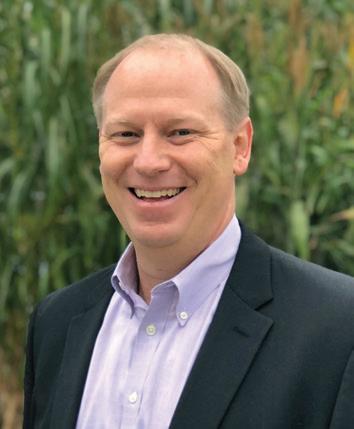
Connect with us for updates, special events and fun science.
Sincerely,
 Todd Bastean President and CEO
Todd Bastean President and CEO
To inspire everyone to be curious and engaged in science.
Mission of the Saint Louis Science Center
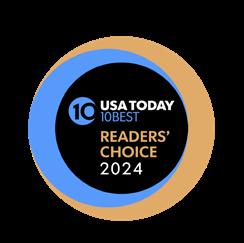
2 SUMMER 2024
Smithsonian A liate Membership Program Smithsonian A liate Membership Program
Summer Hours
Thursday 9:30am–4:30pm
Friday 9:30am–7:30pm
Saturday–Monday 9:30am–4:30pm
Enjoy the Science Center later on Fridays this summer. As usual, we are open until 9:00pm for First Friday events.
Open until 5:30pm on Saturday, July 6 and Sunday, July 7.
Contact
314.289.4400
slsc.org
Saint Louis Science Center 5050 Oakland Avenue St. Louis, Missouri 63110
Membership
Services & Sales: 314.289.4414 slsc.org/membership memberships@slsc.org
Member Reservations: 314.289.4424
Reservations
Advance Sales & Group Reservations: 314.289.4424
Education Programming information: education@slsc.org
Events
Host your next private event at the Saint Louis Science Center. Services and catering provided by Saint Louis Science Center Events. For information: 314.286.4667.
Accessibility
Complimentary wheelchairs and strollers are available in the lobby. Motorized scooters are available for a rental fee. Personal Hearing Assistance Devices are available at the OMNIMAX® Theater and Planetarium. Captiview caption devices are available for all OMNIMAX® films.
Official Partners
The Saint Louis Science Center gratefully acknowledges the support of our Official Partners.

In This Issue...
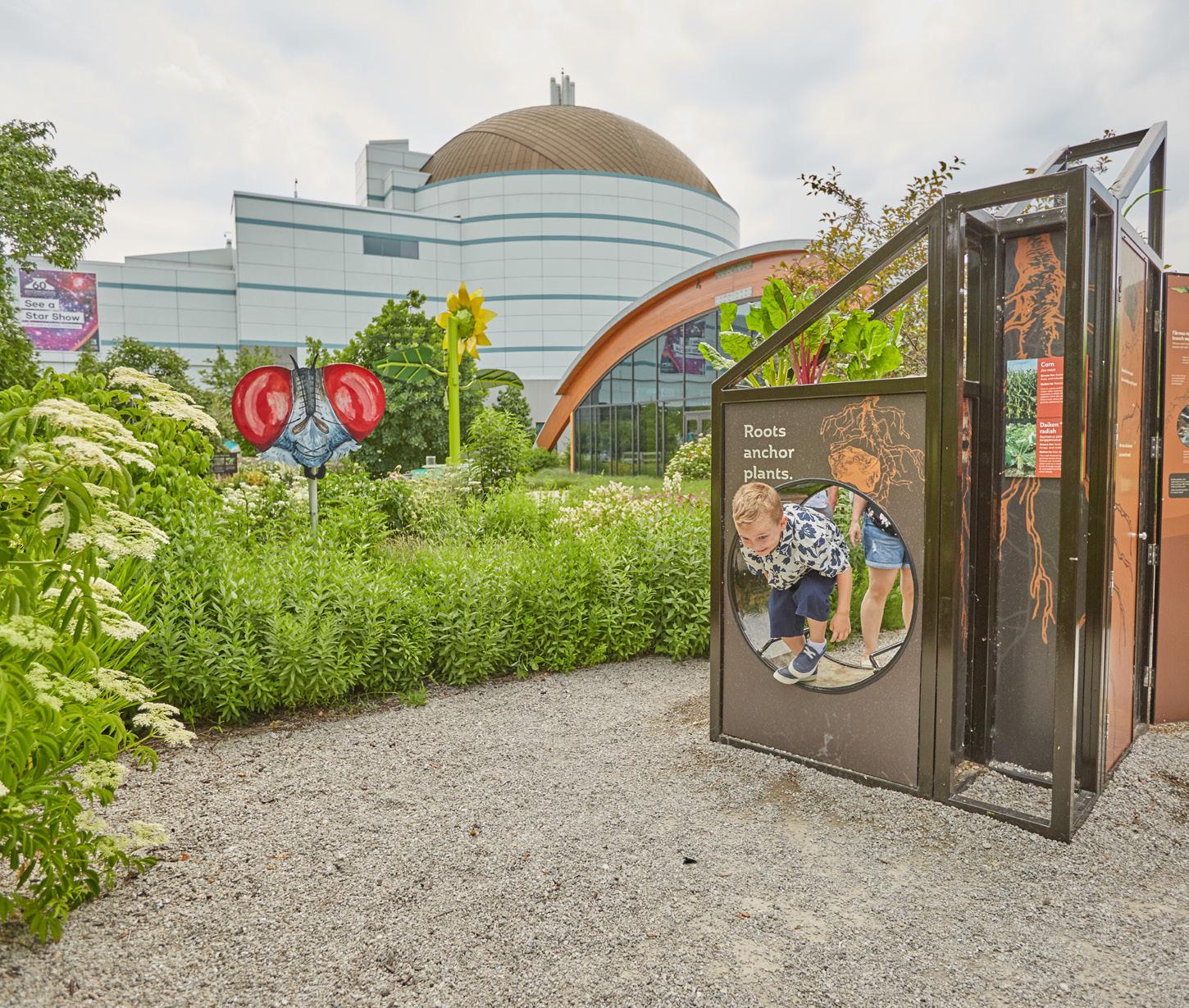
Membership Matters
See how a recent grant from Boeing is helping support the Science Center’ s Community Science efforts, and learn about how you can participate in the Science Center’s upcoming 11th annual golf tournament benefiting STEM education. 4 6 10 14 19 26 30
Learn about upcoming member opportunities, including fun at the OMNIMAX® Theater, SciFest member perks and even member discounts at Jeni’s Ice Cream this July!
Science Today
What is going on with AI lately? Read an article by expert Maggie Makar, who works right on the cutting edge of this new technology.
Did You Know?
Meet Elisa Israel, whose expertise in research and evaluation provides us with the data we need to improve our guest and member experiences!
Science Never Stops
Check out our Summertime Gallery Guide, a recap of our Trek to Totality during the April solar eclipse and more.
Join Us
Get the details on all the fun OMNIMAX documentaries, Star Shows, Laser Light Shows and more coming your way this summer.
Community
Congratulations to our newest graduating class of the YES (Youth Exploring Science) Program! Plus, read about high school students raising money for charity by playing video games!
Partnership & Support
slsc.org 3
MEET YOUR NEW MEMBERSHIP.
With new benefits like digital member cards, daily tickets to the OMNIMAX® Theater and so much more, there are more reasons than ever before to enjoy the perks of being a member of the Saint Louis Science Center. See you this summer!


Family & Friends MAX $195
MEMBERSHIP LEVELS AND BENEFITS:
Individual & Guest $75
Included With Every Visit:
• FREE parking (one car)
• 2 FREE OMNIMAX Theater tickets*
• 2 FREE McDonnell Planetarium tickets
• 2 FREE Discovery Room tickets
• 2 Discounted special exhibition tickets
• 2 Discounted feature-length film tickets
Family $99
Included With Every Visit:
• FREE parking (one car)
• 4 FREE OMNIMAX Theater tickets*
• 4 FREE McDonnell Planetarium tickets
• 4 FREE Discovery Room tickets
• 4 Discounted special exhibition tickets
• 4 Discounted feature-length film tickets
Family & Friends $135
Included With Every Visit:
• FREE parking (one car)
• 6 FREE OMNIMAX Theater tickets*
• 6 FREE McDonnell Planetarium tickets
• 6 FREE Discovery Room tickets
• 6 Discounted special exhibition tickets
• 6 Discounted feature-length film tickets
PLUS:
• 20% off Summer STEM Explorers camp
Membership questions?
Contact memberships@slsc.org or call 314.289.4414
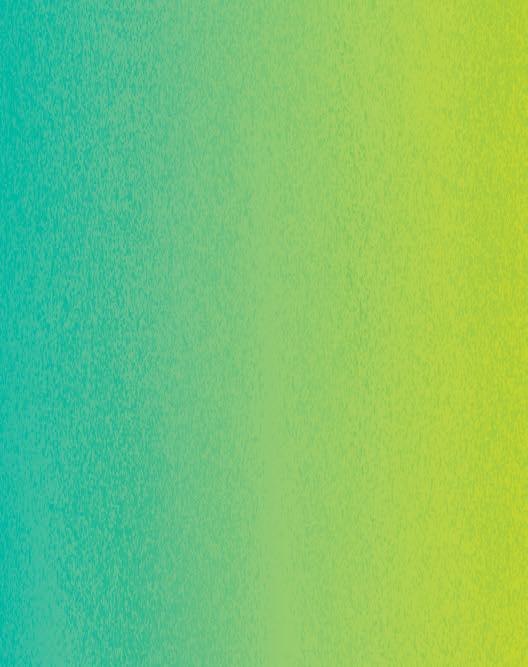
Included With Every Visit:
• FREE parking (one car)
• 8 FREE OMNIMAX Theater tickets*
• 8 FREE McDonnell Planetarium tickets
• 8 FREE Discovery Room tickets
• 8 Discounted special exhibition tickets
• 8 Discounted feature-length film tickets
PLUS:
• 20% off Summer STEM Explorers camp
Galileo $300
All the benefits of Family & Friends MAX,
PLUS :
• Invitations to select special events
• Recognition in our Annual Report
• Smithsonian Affiliate Membership
Newton $600
All the benefits of Galileo,
PLUS :
• Invitations to exclusive VIP events
Einstein Society $1,000+
All the benefits of Newton,
PLUS :
• 10 FREE OMNIMAX Theater tickets
• 10 FREE McDonnell Planetarium tickets
• 10 FREE Discovery Room tickets
• 10 Discounted special exhibition tickets
• 10 Discounted feature-length film tickets
• Honor Roll Recognition in NewScience
• Invitations to exclusive VIP events
• Invitation to VIP reception hosted by n the President and CEO
*MEMBERSHIP TERMS: Membership benefits are active for one year from month of purchase. Free OMNIMAX® tickets expire when membership term expires and cannot be transferred or extended. Feature-length films are not included in free OMNIMAX® Theater tickets. Memberships are intended for individual households only and are not refundable or transferrable. Science Center and Smithsonian Affiliate benefits are subject to change without notice. For tax deductibility, please visit slsc.org/member-FAQ
4 SUMMER 2024 MEMBERSHIP MATTERS
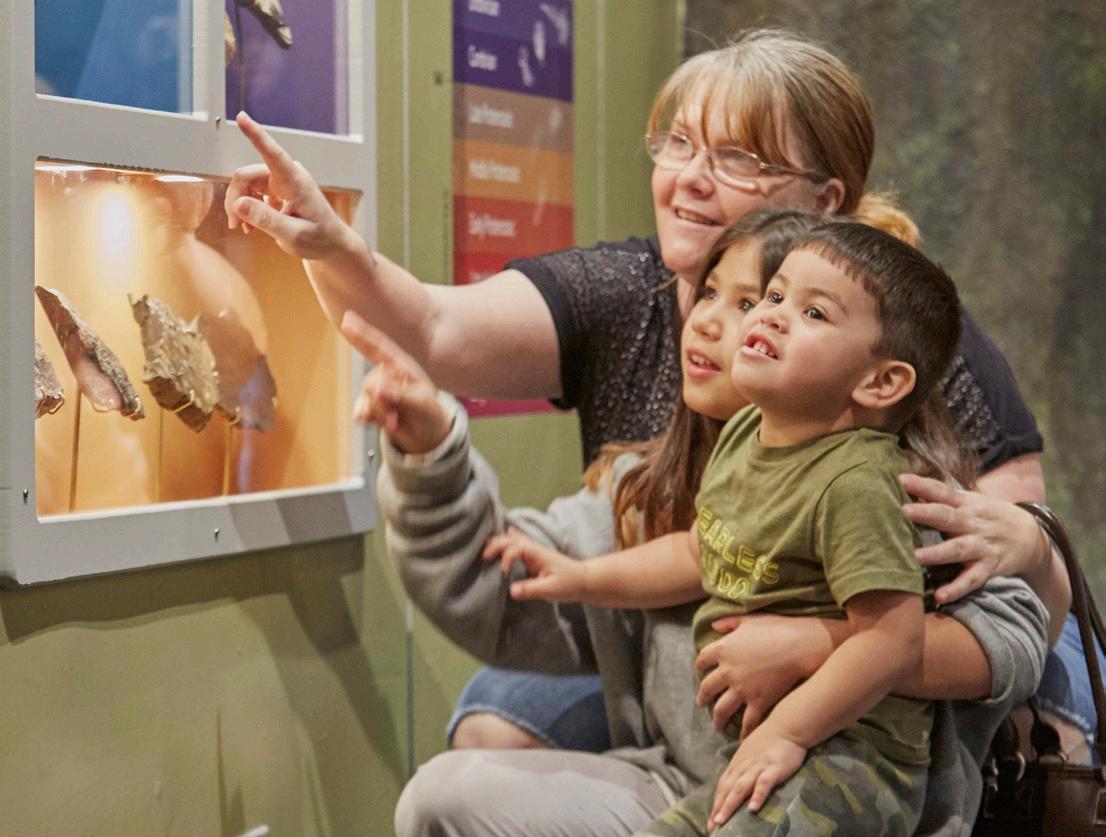
Upcoming Member Events



Hot Deals on Cool Treats
We’re celebrating National Ice Cream Month this July with a deal just for Science Center members at Jeni’s Ice Cream’s Central West End location (389 N. Euclid Ave). Between July 1–July 31, show proof of Science Center membership to receive 25% OFF their truly SPLENDID ice cream!
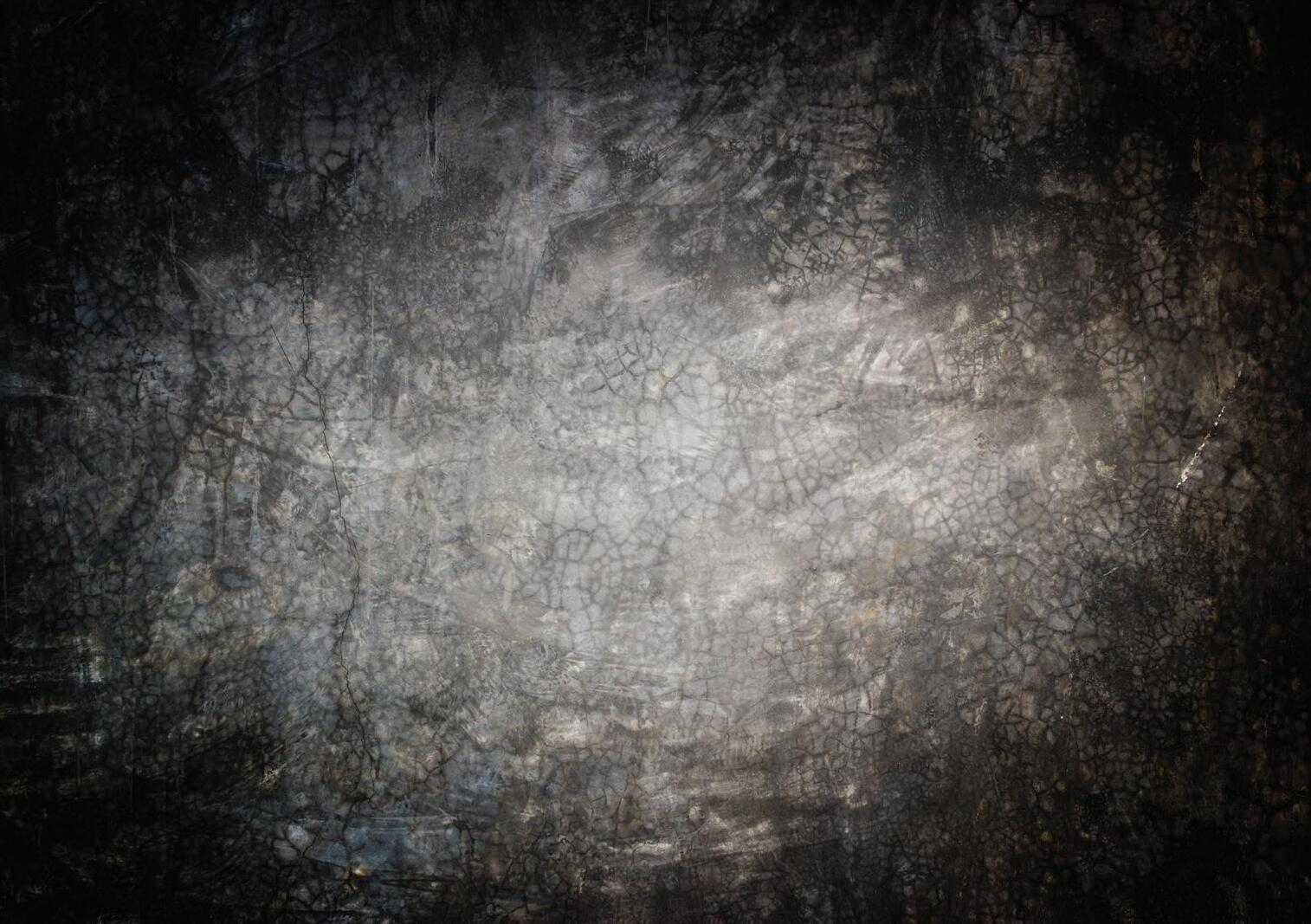
Join us before we open to the public for a special, members-only opportunity to view our newest exhibition, SUE: The T. rex Experience Refreshments will be provided.
Check out our members-only Dads and Dinos grab-and-go brunch immediately following this event. See our website for more details!

THURSDAY, JUNE 20, 5:30PM & 7:00PM
OMNIMAX® Member Preview: Blue Whales
Go on the journey of a lifetime to explore the world of the magnificent blue whale, a species rebounding from the brink of extinction. Popcorn and a beverage are included with every FREE member reservation.
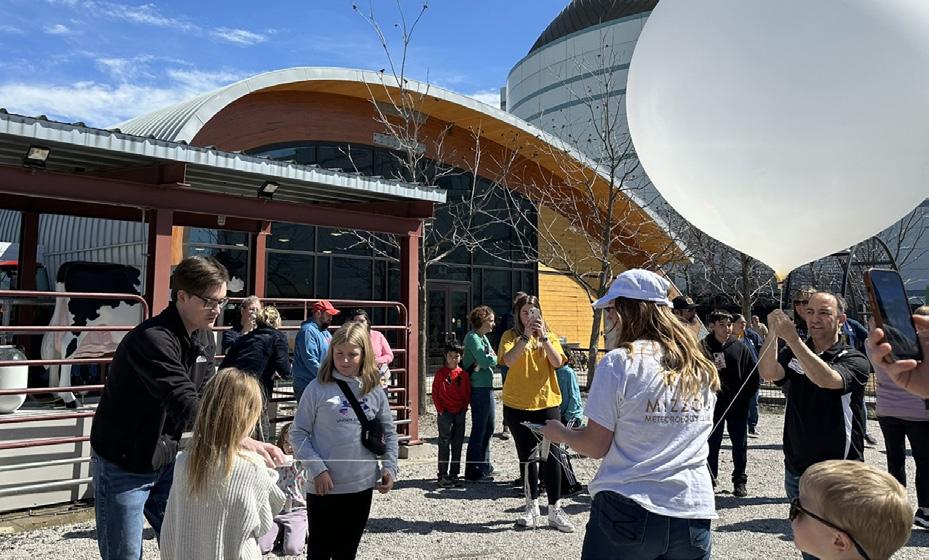
Member Fun at SciFests
We’d like to extend our gratitude to the special guests at this year’s public SciFest events who took extra time out of their busy days to help us create extraordinary events just for our members!
These guests have included professor and astrophysics expert Dr. Marco Cavaglià with Missouri S&T’s Physics Department, who spoke to our members at SciFest: Engineering Expo about neutron stars and all the things in our houses that are made of them; students and professors from Mizzou’s Atmospheric Sciences Department, who invited members to be part of their weather balloon launch at SciFest: The Great Outdoors in April; and flight technician Jenna Cadwallader, who flew in from California for that same SciFest to talk with our members about her experiences building the Perseverance Rover at NASA/JPL. We truly appreciate you taking the time to geek out with us!
Stay tuned for announcements about more fun member components at upcoming SciFests! See page 19 to learn more about the upcoming SciFest: Play and Creativity Expo.
5
STEM EXPERT SPOTLIGHT
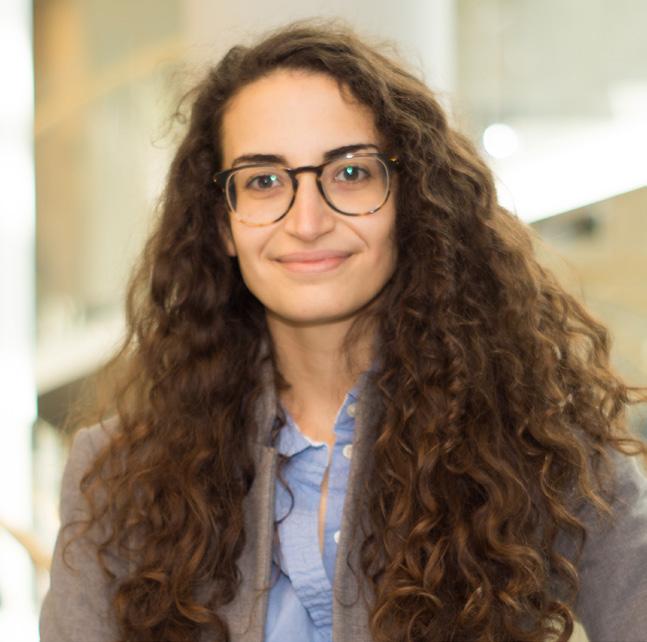
Maggie Makar is an Assistant Professor of Computer Science and Engineering at the University of Michigan in Ann Arbor. Her work involves research in Artificial Intelligence (AI), including developing novel algorithms and using tools from learning theory to analyze their efficiency and complexity, as well as mentoring PhD students on how to conduct AI research and teaching classes about Machine Learning (ML) and AI. Makar previously held positions at Google Brain and Microsoft Research. She completed her PhD in computer science at MIT and received her bachelor of science in mathematics and economics from the University of Massachusetts in Amherst.
WHAT ARE SCIENTISTS TEACHING AI?
Tell us about your work.
My work focuses on developing Machine Learning (ML) models incorporating cause and effect. For example, if we use data of camels in the desert and cows on grazing land to train an ML model, it might incorrectly learn to predict that an image has a camel whenever the background is sandy and a cow whenever the background is grassy. My work corrects these kinds of mistakes by teaching the model there is no causal relationship between the image’s background and the type of animal.
Causal reasoning is also important in developing models that will be used to make decisions. Most existing ML models illustrate the correlations in the world: as ice cream sales rise, drowning incidents rise. Instead, the causal models that I develop ask: if I reduce ice cream sales, should I expect the number of drowning incidents to decline? I develop these kinds of causal models for use in a clinical context.
How did you get interested in AI and ML?
Growing up in Egypt, I never had an example of what a career in science could look like, especially as a woman. What I had was an innate curiosity about how things work. The more I read and sparked my curiosity, the more aware I became that math is the language of science. Many years later, I came to the U.S. to complete an undergraduate degree in mathematics and saw through my professors what it looks like to have a career in STEM. After graduating, I got my first job as a research assistant working on AI models in healthcare, helping develop models for early detection of adverse health outcomes, allowing clinical teams to preemptively provide needed care. It was through this job that I really got hooked; my work allowed me to reconcile my curiosity for understanding the math and science behind AI models with a tangible benefit to society.
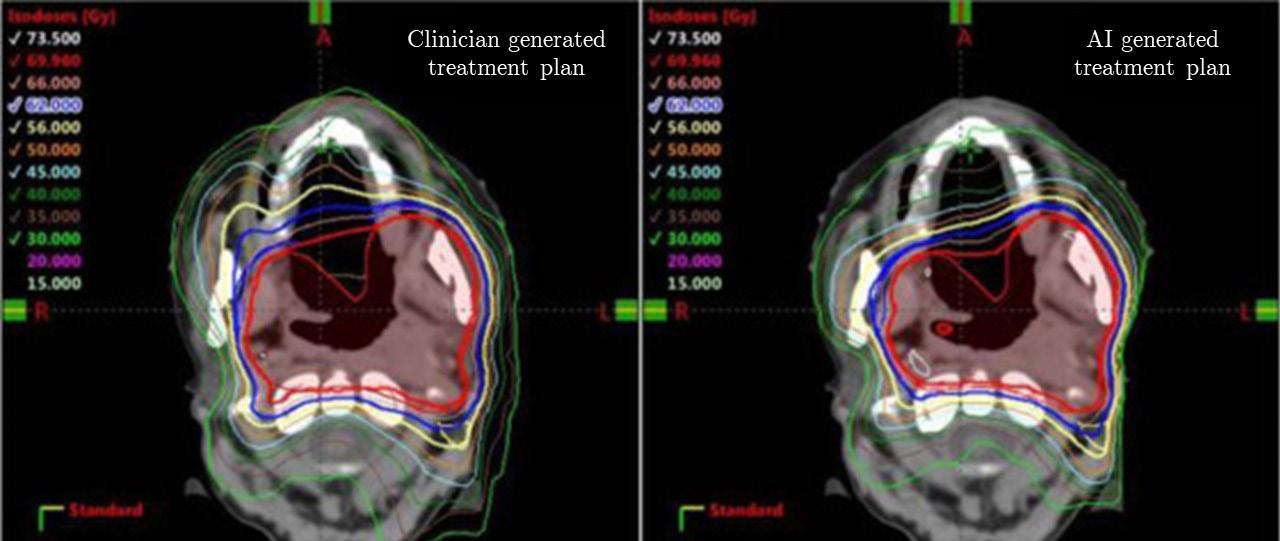
6 SUMMER 2024 SCIENCE TODAY
Image modified from “Clinical Acceptability of Automated Radiation Treatment Planning for Head and Neck Cancer Using the Radiation Planning Assistant” by Olanrewaju et al. Originally published in Practical Radiation Oncology, 2021
WITH STEM EXPERT MAGGIE MAKAR
How would you describe the current capabilities and applications of AI, and how does it connect to the work you do?
We are witnessing incredible growth in AI, specifically relating to ML models that process unstructured text and images. Unfortunately, these models can learn to mimic spurious correlations reflected in the data used to train them. This behavior can lead to misinformation, and in some cases can perpetuate systemic biases. My work addresses these problems by discouraging these models from latching onto spurious correlations and encouraging them to encode causal concepts instead.
Another phenomenon we see as AI models become more ubiquitous is that users of an AI model tend to change their behavior in response to the output from a model. We call this “model gaming,” meaning users with the necessary resources might be able to manipulate their data to extract favorable predictions from the AI models. My work addresses this issue by developing models that capture less manipulable, true causal determinants of an outcome.
In terms of application, I’ve been involved in the fast-growing area of healthcare, where clinicians might want access to models that support their decision-making processes. To be effective, these models must give accurate estimates about the causal effect of the decision rather than just outcomes that are associated with that decision. I work to develop models that can estimate this causal effect using small and noisy data. For example, in a lot of healthcare datasets, sicker patients are likelier to receive extensive treatments, but because they are sicker, they are also likelier to experience adverse outcomes. A naive AI model trained on this data might encode the notion that extensive treatments are correlated with bad outcomes. By contrast, causal models are explicitly designed to consider confounding factors such as patient sickness to provide a better estimate of the effect of those treatments.
What do people need to know about AI?
First, AI models and applications that make headlines are only scratching the surface of what scientists are working on. There is a lot of work providing immense benefit to society that we barely hear about. For example, some of our work here at the University of Michigan focuses on developing ML models for early detection of Clostridioides Difficile infections, an infectious disease that attacks the gut. Other work at MD Anderson Cancer Center led to the development of an AI-based radiation cancer treatment planning tool. In education, AI-based adaptive learning tools could improve learning outcomes for K-12 students and even in higher education.
People tend to think of sentient robots when considering AI. While the idea of creating a conscious robot has many important implications we should seriously consider, it often sidetracks us, preventing us from thinking deeply about the negative consequences of AI that exist now. My worry is that by focusing on these futuristic problems, we pay less attention to immediate concerns such as extreme polarization due – in part – to social media algorithms, or issues relating to the perpetuation of systemic biases using AI tools.
What is on the horizon in AI research and applications?
The trend recently is to build huge models that digest immense datasets and require giant computational resources. There is a sense that this direction leads to a lack of democratization in the AI field; the number of entities with access to such resources is very limited. There is a lot of work now to develop smaller, more efficient models that perform similarly to these mega-models. In addition, the mega-models pose another challenge: they are hard to understand. I think we will see more work in trying to understand and localize the abstract concepts that these large models are encoding.
One of the negative societal side effects of powerful generative AI models is the rise of deepfakes, which can be a catalyst for chaos and contribute to the spread of misinformation. On the horizon, I think we will see the AI community develop methods for effective watermarking of generated content as well as automated detection of deepfakes. I [also] think we will see much more careful thought being put into regulating the use and development of AI.
What are the most fulfilling aspects of your work?
I really enjoy the chase inherent to scientific discovery. It’s fulfilling to take an idea from an abstract thought to a concrete AI model. Once a model starts giving accurate results after months of fixing failures, it gives me a fun thrill. Similarly, trying to mathematically characterize properties of our model is like putting together a challenging puzzle. It is immensely satisfying when the last piece perfectly clicks in, and I can see the full canvas of my work.
While this scientific chase is exciting, it is even more rewarding when done in collaboration with community. Sometimes I become limited by my own predilections and thoughts, and it is really satisfying to watch a student come up with an entirely different, creative solution to a problem. It is incredibly fulfilling to see students come in with fresh perspectives, taking our research in directions I could not have imagined and ultimately leading to more efficient and robust AI models to better serve society.
What is the most challenging aspect of your work?
The recipe for succeeding in AI is to get comfortable with failure, which can be really challenging. It’s not uncommon to spend weeks developing a model only to realize that if we tweak our testing conditions a bit, it completely fails, or that a competing model performs significantly better. In a fast-moving field like AI, failure can also mean being scooped: another team beats us to the punchline, making our model obsolete. The fast pace of this field also presents another challenge: it is hard to stay on top of all the newly developed models and published work.
What advice would you give to others interested in this type of work?
Being an expert in ML often requires being able to pull ideas from calculus, statistics and linear algebra plus knowledge of coding languages (most commonly Python). So I would recommend learning the concepts in these fields. Developing a healthy attitude toward failure and feeding your innate scientific curiosity are also important for working in AI, as they are in almost any scientific field.
7
New STEM Experiences in the Life Science Lab Atrium
Explore the Connections Between Nature and Medicine
Recently, the Science Center unveiled a refresh of the Life Science Lab’s Atrium, featuring new STEM experiences that invite guests to explore the connections between nature and medicine. The refreshed gallery explores how scientists can look to nature in order to improve human health, from medicines of the past to the ways modern technology, like DNA sequencing, allows researchers to make new discoveries.


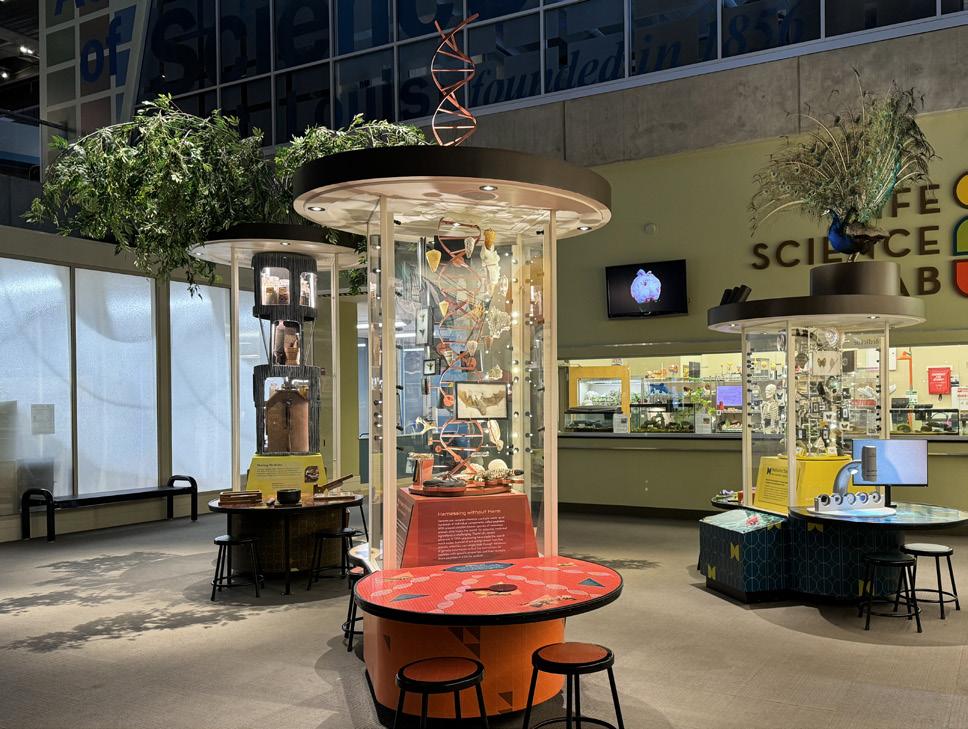
8 SUMMER 2024 GALLERY SPOTLIGHT

“ My hope for the space is to introduce guests to biomedical sciences in a way they don’t expect and hopefully to inspire a sense of connection between humans and the rest of the living world. ”
– Dakota Price , Senior Educator, Life Sciences
Dakota Price, senior educator, life sciences at the Science Center, hopes to introduce guests to biomedical sciences in unexpected ways through the Atrium’s new STEM content and hopefully shine a light on the connection between humans and the living world.
Price points to how many of the challenges humans are looking to solve in medicine have already been solved by nature. “We’re at a place where we have the technology and understanding to harness that while still protecting other living things,” she adds.
The first of the updated towers will allow guests to explore how nature has been used to provide medicine in the past. Added elements and activities show how mid-19th century medical practitioners used leeches as a cure-all for everything from boils to headaches, as well as the tools and simple methods (like chopping, grinding and mixing) used in making medicines and how they were not that different from tools and techniques we use now.
Another tower will illustrate ways nature can inspire new medical tools and techniques. Just as some researchers look to nature for new sources of pharmaceuticals, other look to nature as inspiration for designing new medical tools, unlocking new methods of delivering medicine, grafting tissue and more.
Guests in the Life Science Lab Atrium can learn about the axolotl salamander and how scientists are studying them for their ability to regenerate damaged (or even missing) tissue in hopes of finding new ways to repair tissue and speed up healing in humans.
In another section, guests can find out about how scientists at MIT, the Massachusetts Institute of Technology, developed a “super sticky” surgical tape inspired by the nano-sized ridges and valleys on gecko feet, allowing the tape to work on hard-to-suture parts of the human body. The third tower invites guests to learn the ways modern science—specifically the ability to sequence DNA—has allowed humans to research medicines in animals without harming them.
To help illustrate the microscopic structure of DNA, the Science Center’s exhibits team created a large-scale, custom DNA strand out of metal. Rising up through the center of the tower, the metal DNA strand shows the double-helix structure of DNA and helps guests see how specific portions of DNA can contain genetic information researchers might use for potential medicinal ingredients.
“Animal venoms are a big focus here,” says Price. She adds that many currently used pharmaceuticals were derived from studying the venoms of animals like snakes, spiders, scorpions and more.
In addition to the Life Science Lab Atrium’s updated towers, the gallery answers the question of what it takes to prove a medicine or treatment works (and works safely) before doctors and pharmacists are able to use it with patients.
With the story of James Lind, an 18th century British Royal Navy surgeon stationed aboard the H.M.S. Salisbury, guests can learn about how Lind’s “fair test” for scurvy in 1747 led to the discovery that eating citrus fruits worked to cure the disease, debunked other widely used remedies at the time and paved the way for today’s modern clinical trials, where many of Lind’s underlying principles of controlled experimentation and careful observation are still applied.
As the biomedical field continues to advance—thanks in part to the work of scientists and researchers right here in the St. Louis region—members of the St. Louis community will be able to visit their Science Center to discover more about it.
9

Meet the Team:
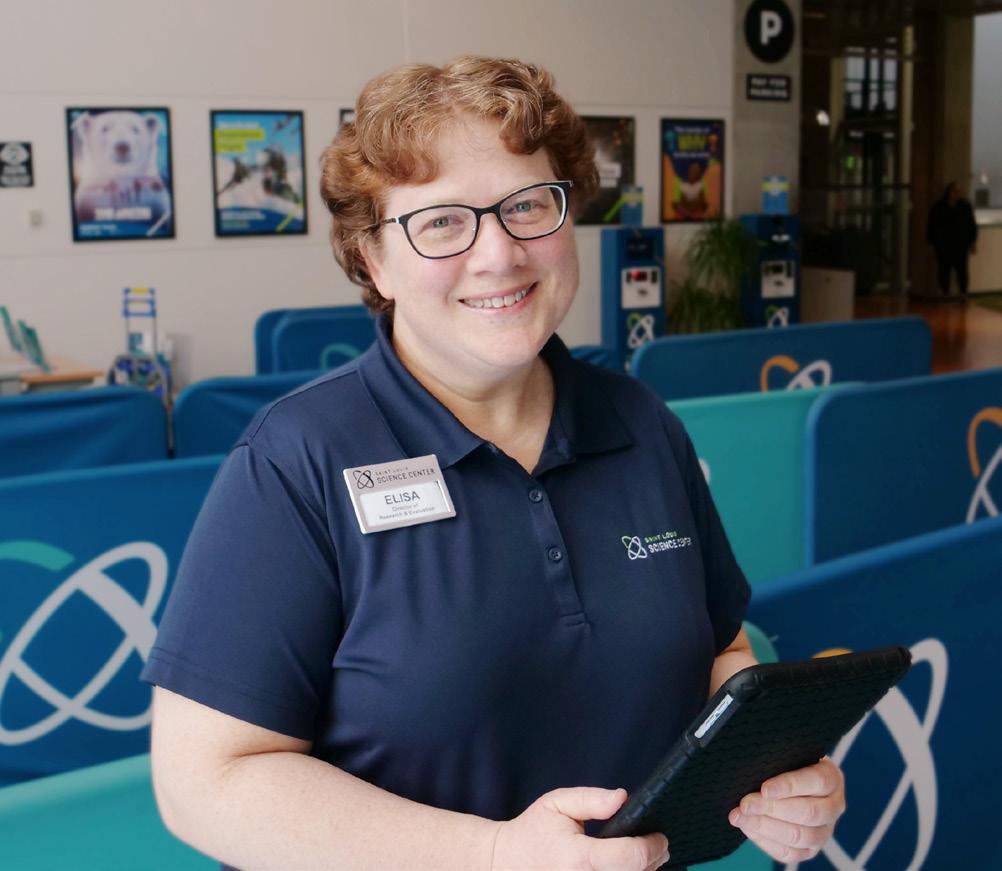
Q: Tell us about the evolution of your career with the Science Center.
ELISA ISRAEL Director of Research and Evaluation
If you’ve ever spent a day enjoying the Wonder of Why in our Science Center, and then, as you prepared to leave, you met a friendly Science Center team member who asked you to take a survey about your experiences that day, you may have met our Director of Research and Evaluation, Elisa Israel, who has been with us for 28 years and whose work is so important to our operations and the ongoing improvements to our guest experiences here.
Q: Hi, Elisa! Tell us about yourself – your education, career highlights, your family, your hobbies – anything you’d like us to know.
A: Hi! I am a lifelong St. Louisan, major Cardinals fan, Star Trek nerd and space science geek. I was first introduced to astronomy by my father, who is a retired astrophysicist. Thanks to him, as a child I was fortunate to have opportunities to view the moon, planets, stars and even Halley’s Comet through the historic telescope at Washington University. I was particularly fascinated by the planets, so in school I studied Earth & Planetary Science, earning my bachelor’s at Northwestern University and my master’s at Washington University. I started working here while I was still in graduate school, so I have been fortunate to have a long career at the Science Center and have seen and been part of a lot of changes over the years. Outside of work, I enjoy photography, knitting, trivia nights and probably watching too much Star Trek (old and new!).
A: When I started graduate school, I figured I would follow the typical path and become a university professor or researcher at someplace like JPL (NASA’s Jet Propulsion Laboratory, which manages most of the planetary exploration missions), but I realized that actually wasn’t a good fit for me. I knew I still wanted to be involved with science and that I enjoyed talking with people about science, so I decided to pursue the museum world as a career path. My first job here was as a part-time Gallery Assistant where I got to do science demonstrations, develop and facilitate tabletop activities and talk with guests about the exhibits. During my second year here, a summer internship opportunity became available in the Research & Evaluation Department. I discovered a new aspect of museum work that I really enjoyed. The internship led to a part-time position in Research & Evaluation, which led to a full-time position, and the rest, as they say, is history!
Q: Tell us about the work you do and the impact it has on the Science Center as it evolves year over year.
A: The role of Research & Evaluation is to design and implement evaluation studies so that systematically collected and analyzed audience data can inform the decision-making process related to the Science Center’s exhibits, programs and operations. This means my team and I have the opportunity to work with colleagues across the Science Center. When new exhibits are in development, we often interview guests or lead focus groups to understand what interests them about a particular topic.
We also invite guests to try out prototype exhibits so we can see what works or doesn’t work before the design is finalized. For educational programs, we may do surveys or observations to understand what people are getting out of the experience. We also do a lot of exit surveys. The Science Center participates in a multi-institutional collaboration where museums across the country collect exit survey data
10 SUMMER 2024 DID YOU KNOW?
2022 Opening Minds to Science The Saint Louis Science Center’s Report to the Community
using a common set of questions. This allows us to compare our data with similar institutions, as well as pool all the data together to provide a broader picture of science museum visitors in general. These exit surveys provide key data about museum visitors’ demographics, their level of satisfaction with their experience and their patterns of how they visit–things like which areas they spend time in, how often they come and how long they stay. All this information helps the Science Center understand what’s working well and make decisions about ways to improve the experience.
If you want to know more about the work of the Research and Evaluation team, please check out our annual Opening Minds to Science report, available at slsc.org/reports, which highlights the variety of studies we do in Research & Evaluation.
Q: Can you tell us more about the field of Visitor Studies?
A: Sure! A colleague of mine once described Visitor Studies as the “anthropology of the visitor.” We use a variety of both qualitative and quantitative methods to learn about our audiences and the experiences they have in our exhibits and programs. Many larger museums, particularly science museums, have internal staff focused on this work, but there are also independent consultants in the field. Our professional organization, the Visitor Studies Association, for which I previously served on the Board of Directors, convenes webinars, workshops and an annual conference where we can gather and learn from each other about the current work happening across the field.
Sometimes Visitor Studies work takes the form of internallyfocused evaluations, which help us better understand our audiences, learn what is (or isn’t) working within our offerings, or support grant-funded projects. Other times, the work is part of larger research studies that inform the museum field as a whole. For example, we are partnering with colleagues at COSI, the Center of Science and Industry, a large science museum in Columbus, Ohio, to be one of four data collection sites for their research about how museum visitors’ preferences influence what they do during their visit.
Q: What’s a surprising statistic about the Saint Louis Science Center?
A: One statistic that often surprises people is that, in most years, between one-quarter and one-third of Science Center guests visit without children. Yes, the Science Center is a great place to bring kids, but there is also a lot here to interest and engage adults!
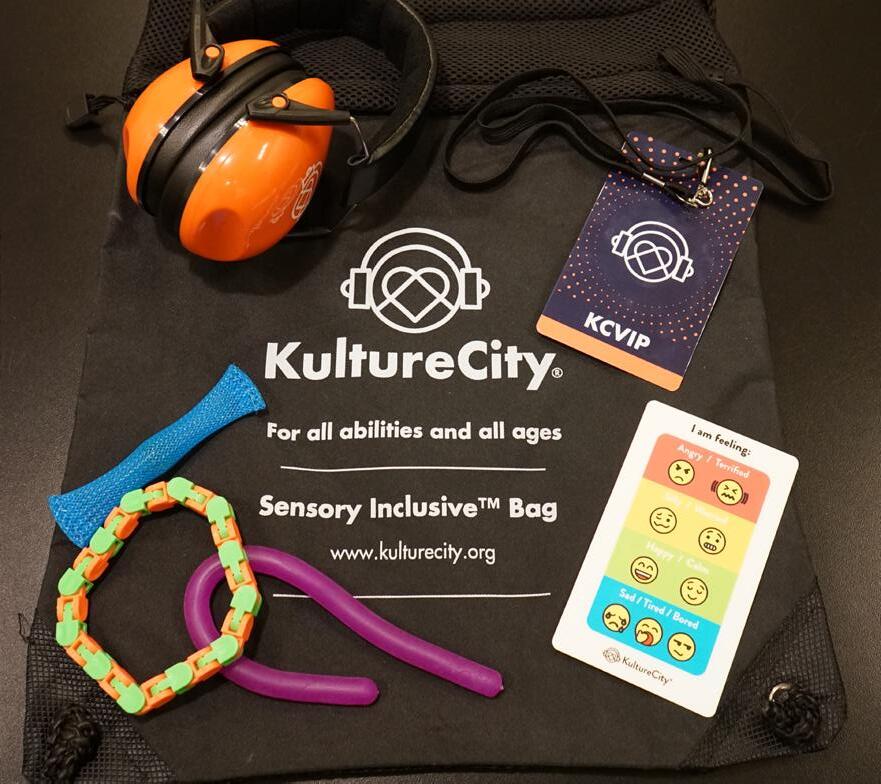
Accessibility Updates
Accessibility for our guests is very important to the Saint Louis Science Center. We have onsite tools to help guests make the most of their experience and now offer improved accessibility on our website, as well. These changes help us achieve one of our values–to be inclusive and welcoming to all.
A new partnership in 2023 with KultureCity®, an organization dedicated to sensory accessibility and acceptance for people with invisible disabilities, helped the Science Center live this value. Science Center team members participated in awareness training to be better equipped to identify and support the variety of sensory needs guests might experience. New signage throughout the Science Center helps guests identify quiet areas and noisier locations where headphones may be helpful. Sensory bags available for guests include noise-canceling headphones, fidget items, a “feeling thermometer” to help communicate emotions and more.
Plus, in the top right corner of our website, you will see a little white figure inside a blue circle. This online tool–Userway–has enhanced our website with a more accessible experience.
New accessibility options at slsc.org include:
• A built-in screen reader
• Ability to adjust contrast
• Ability to highlight links
• Adjustable text size and spacing
• Options to hide images
• Dyslexia-friendly fonts and much more!
People who use the widget can “set it and forget it.” The next time they visit our website, their settings are saved to make their digital experience better.
We hope you find these changes helpful!
COMING SOON:
Sensory hours! Visit slsc.org/accessibility for more information.
11
The WONDER of... CHIRALITY
(kīrăl'ĭtē)



Chirality refers to an object that has an opposite or mirror-image form of itself. Human hands are a great example of chiral objects because there are two different forms that are mirror images of each other. Hold up your hands so they face each other and they match, but place one hand on top of each other, and they don’t match, right? Human hands are chiral objects, and the word “chiral’ actually comes from the Greek word meaning hand.
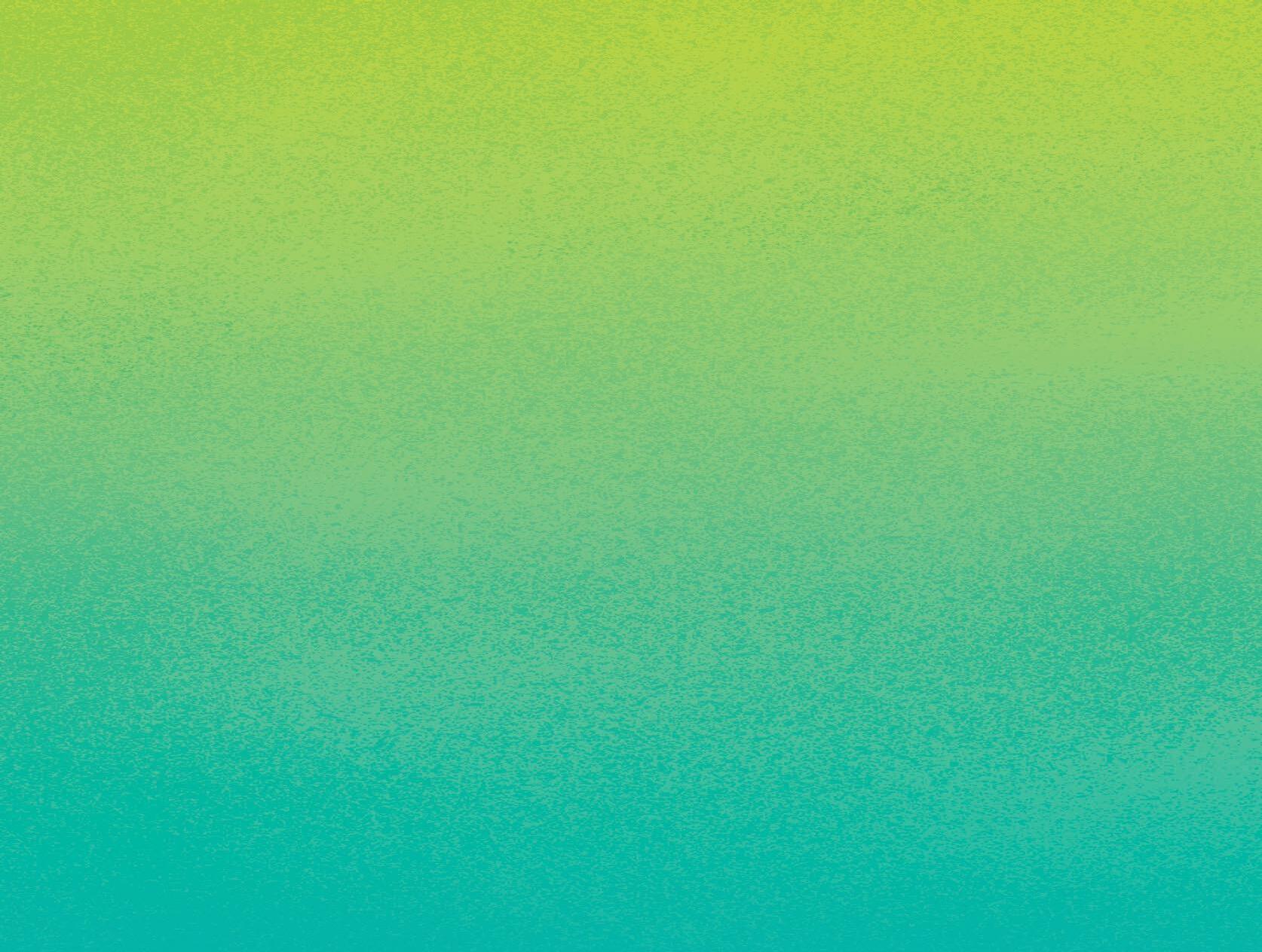
DID YOU KNOW?
Molecules can also be chiral and have different orientations and a mirror-image twin. These molecules are actually referred to as “right-handed” and “left-handed,” referring to how polarized light rotates when shining through the molecule.
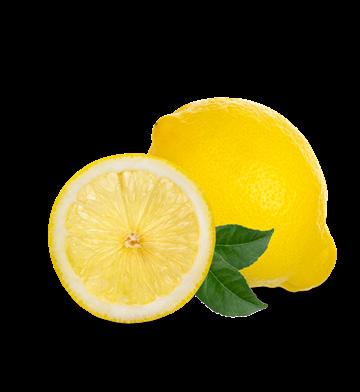

The mirror-image forms of a molecule can have very different functions and results. For example, the left-handed form of limonene is what makes lemons smell like lemons. The righthanded form of limonene, however, produces the smell of oranges!
CURRENT RESEARCH:


OTHER EXAMPLES:

The orientation of the molecule carvone makes the difference between the smell of rye bread and mint.
The left-handed form of thalidomide helps with motion sickness, while the right-handed version was discovered to be toxic and cause birth defects.

Scientists in the Rudra Lab at Washington University in St. Louis went through Science Communication Training at the Science Center and participated in SciFest: Engineering Expo in February. Jai Rudra and Elise Brown are working with the mirror-image forms of proteins that may allow vaccines to remain effective longer and reduce the need for additional booster doses.


12 SUMMER 2024 SCIENCE NEVER STOPS
H H 0 0
(R)-(+)-limonene (4S)-(+)-carvone (4R)-(-)-carvone
(S)-(-)-limonene



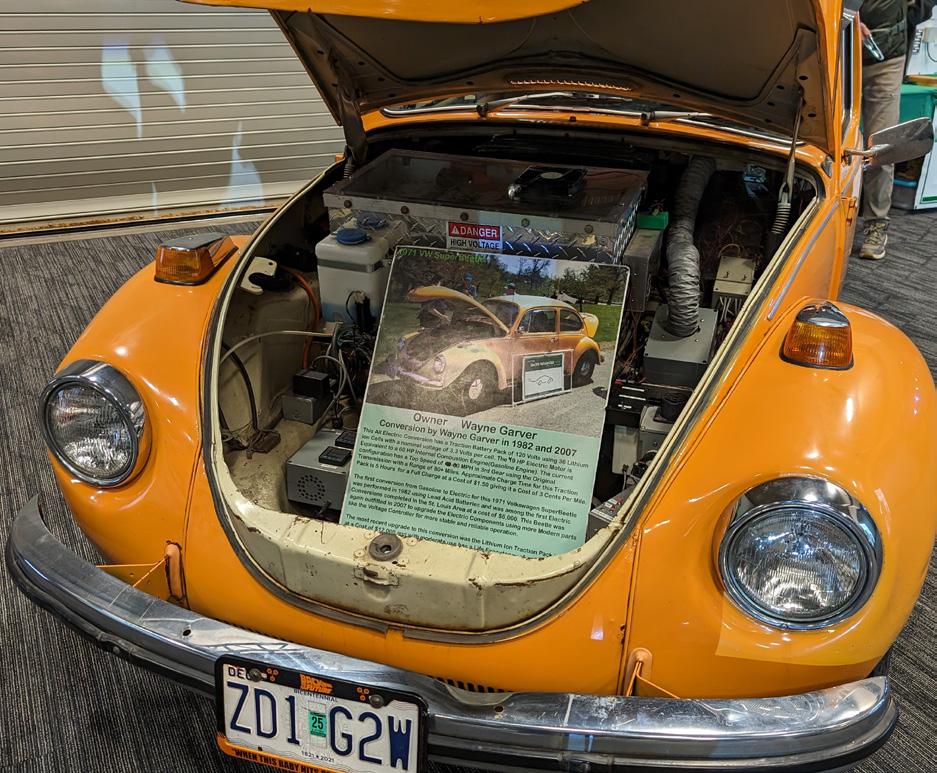
On March 23rd, the Saint Louis Science Center hosted our first EV Ride & Drive event in collaboration with Ameren Missouri. Guests at the Science Center had the chance to take an EV (electric vehicle) out for a spin, learn about EV charging and get a feel for how EVs can fit into their daily lives during the free event. Participating in more than 150 test drives, dozens of drivers (and their families) were able to experience what it’s like to be behind the wheel of an EV with 5-minute test drives on the Science Center campus.
Ameren Missouri hopes the experience will help guests better understand how EVs might fit into their daily lifestyle. “These are the kinds of experiences we can offer our community when we get to partner with expert organizations like Ameren,” says Neville Crenshaw, associate director of strategic planning and special projects here at the Science Center. “Any time we can make new technology hands on and fun, we all win!”
The event included stationary displays of EVs in Boeing Hall, offering guests the chance to see these vehicles up close, as well as live demonstrations at Energy Stage, EV trivia with prizes, and even a Blippi/Meekah Experience where guests could catch a showing of the “Coolest Cars Ever!” episode of the popular kids’ show filmed at the Science Center.
Showcasing their versatility, many of the vehicles available for a test drive were more than just economical daily drivers.
“One of these vehicles has more than 500 horsepower, and that’s by far the most powerful vehicle I’ve ever driven,” Crenshaw mentions. “One advantage to EV drivetrains is that maximum torque is available all the way down to one RPM. I know a lot of us look at EVs as a way of saving money in the long term or being more eco-friendly, but I think there are others who will be more drawn to the performance opportunities these vehicles represent.”
Thank you to Ameren Missouri for helping make this event possible!
13
Summertime Gallery Guide
Check out these exciting STEM experiences at your Saint Louis Science Center.
At the Science Center, there’s always something new to discover. Looking for ideas to make part of your next visit? Our Summertime Gallery Guide is here to help.
How many experiences can you check off this summer?

Life Science Lab Atrium
Have you seen our latest updates in the Life Science Lab Atrium? Come get hands on as you explore the connections between nature and medicine. Learn how scientists can look to nature in order to improve human health, from medicines of the past to the ways modern technology like DNA sequencing allows researchers to make new discoveries.
Learn more about the newest STEM experiences in the Life Science Lab Atrium in our Gallery Spotlight on page 8


Solar Sundays
Every Sunday from 11:00am–3:00pm, come see the sun as you’ve never seen it before. In these free sessions outside the McDonnell Planetarium, join Science Center team members and a variety of solar telescopes to safely view the sun, including features like sunspots and solar prominences.
Solar Sundays take place on Sundays (weather permitting) from Memorial Day through Labor Day.
JOIN US

GROW Pavilion featuring Jane’s Endangered Animal Experience
See it before it leaves! In the GROW gallery, be sure to check out Jane’s Endangered Animal Experience Based on the Apple TV+ series Jane (inspired by the life of renowned primatologist Dr. Jane Goodall), you can learn about endangered bees and why they’re important to our ecosystem, climb into a replica of Jane’s high-tech vehicle from the show to collect pollen and evade predators and more! Help us celebrate pollinators during June with a pollinator walk. Meet in the GROW Pavilion at 1:00pm on Saturday, June 15, 22, or 29 for a short pollinator walk with a Science Center educator.
Plus, every Saturday from 2:00–3:00pm, join us in the GROW Classroom to learn how you can increase pollinator habitats and get hands on with a seed bomb activity and takeaway.
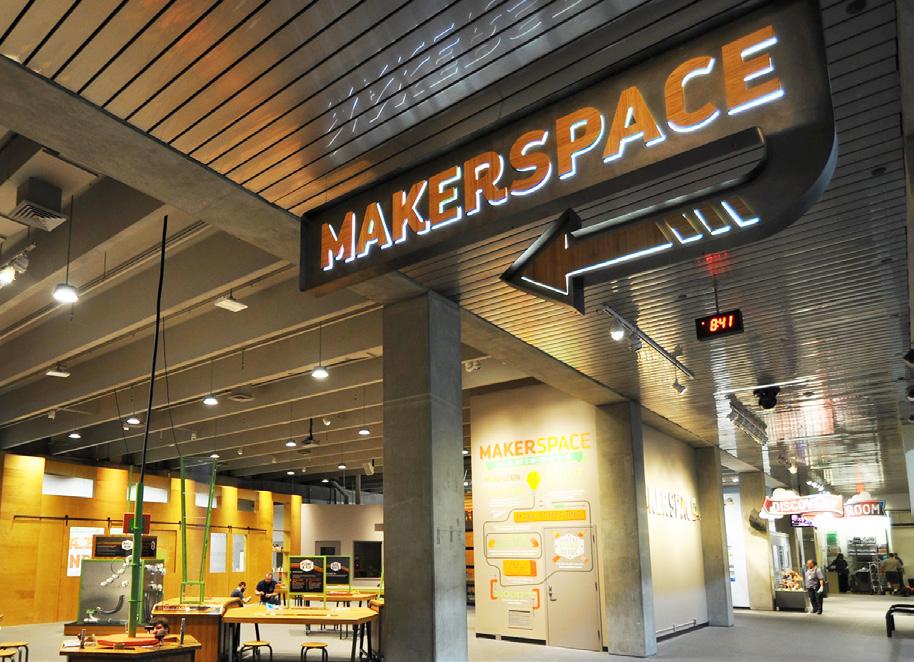

Critter Chat on the Energy Stage
Did you know that the Science Center houses a plethora of insects and animals? Every Sunday at 1:15pm, join us on the Lower Level for Critter Chat. This new STEM experience at Energy Stage takes an in-depth look at our creatures, including tree frogs, our very own ball python and, of course, our giant rainforest cockroaches.
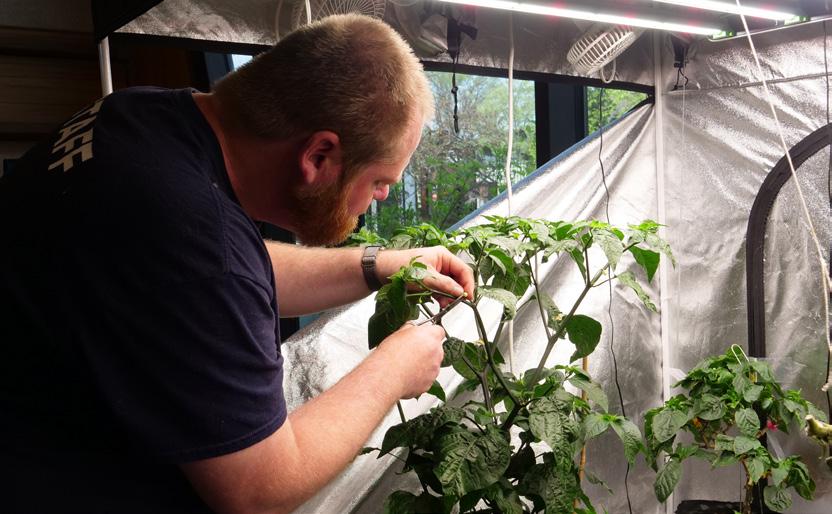
Cross-Breeding Peppers in GROW
The GROW team is hot on the trail of a new pepper, but this is no chili variety you can find in your neighborhood grocery store. Stop by the GROW gallery to learn about our team’s in-house efforts to create a unique (and delicious) variety of bell pepper using cross-breeding methods.
Makerspace Workshops
May 23–June 24, 2024: Come explore the world of Paleo 3D printing! Unearth how paleontologists use 3D printed parts to create virtual replicas of buried fossils and fill in the missing pieces of physical fossils.
June 27–July 22, 2024: Screen print a dinosaur poster! “Ink-vestigate” the screen-printing process that is used to make many different art forms and take home a cool dino screen print poster.
July 25–August 26, 2024: Build your own dinosaur! Let your creativity run wild while you build your own multimedia dinosaur using recycled materials.
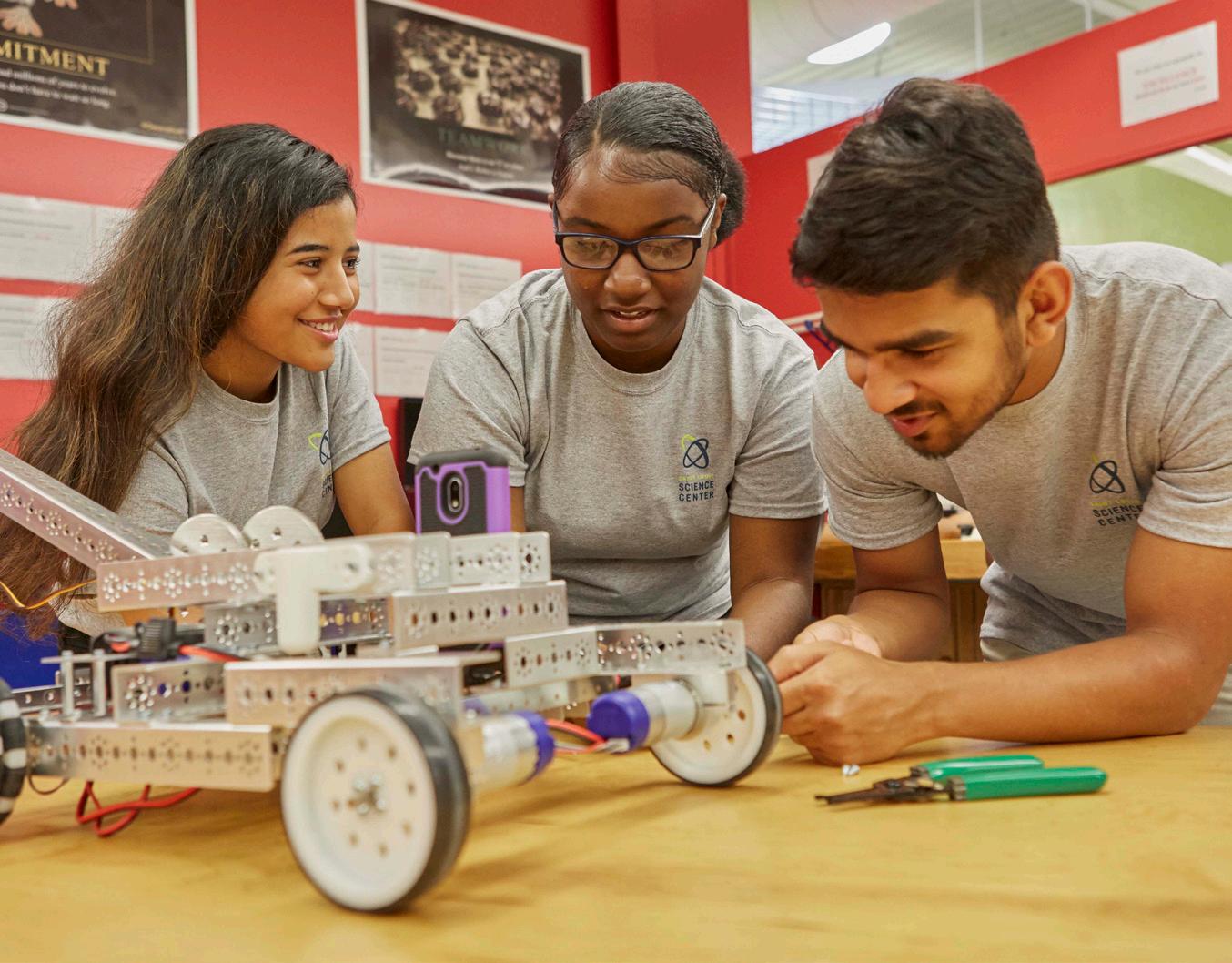
Crawford Taylor Foundation
There’s still time to double your impact as part of the Crawford Taylor Foundation matching gift challenge!
Celebrate 25 years of the YES Program and the YES graduates putting STEM to work. With a generous matching gift opportunity, the Crawford Taylor Foundation invites you to join their support of the YES Program’s legacy of success by making a charitable gift to the Science Center’s Curiosity Fund.
At the Science Center, we believe in the power of curiosity. Programs like our Youth Exploring Science (YES) Program ignite a passion for STEM and impact our St. Louis community by inspiring teens from underserved St. Louis neighborhoods to discover their curiosity for science and technology. Through informal, hands-on STEM education and college and career readiness training, the YES Program helps these teens realize their potential as STEM learners, career professionals (including many right here in St. Louis!), and innovators of the future.
The Science Center is fortunate to have the longtime support of the Crawford Taylor Foundation which local St. Louis entrepreneur Jack Taylor established in 1997 to help make St. Louis a better region. Three generations of the Taylor Family continue this legacy of generous support which founded the Taylor Community Science Resource Center, the home of the YES Program’s operations. They believe in the transformative impact of the YES Program, and to celebrate their longstanding passion for YES and the program’s 25th anniversary, the Taylor Family invites you to make a charitable gift to the Science Center’s Curiosity Fund.
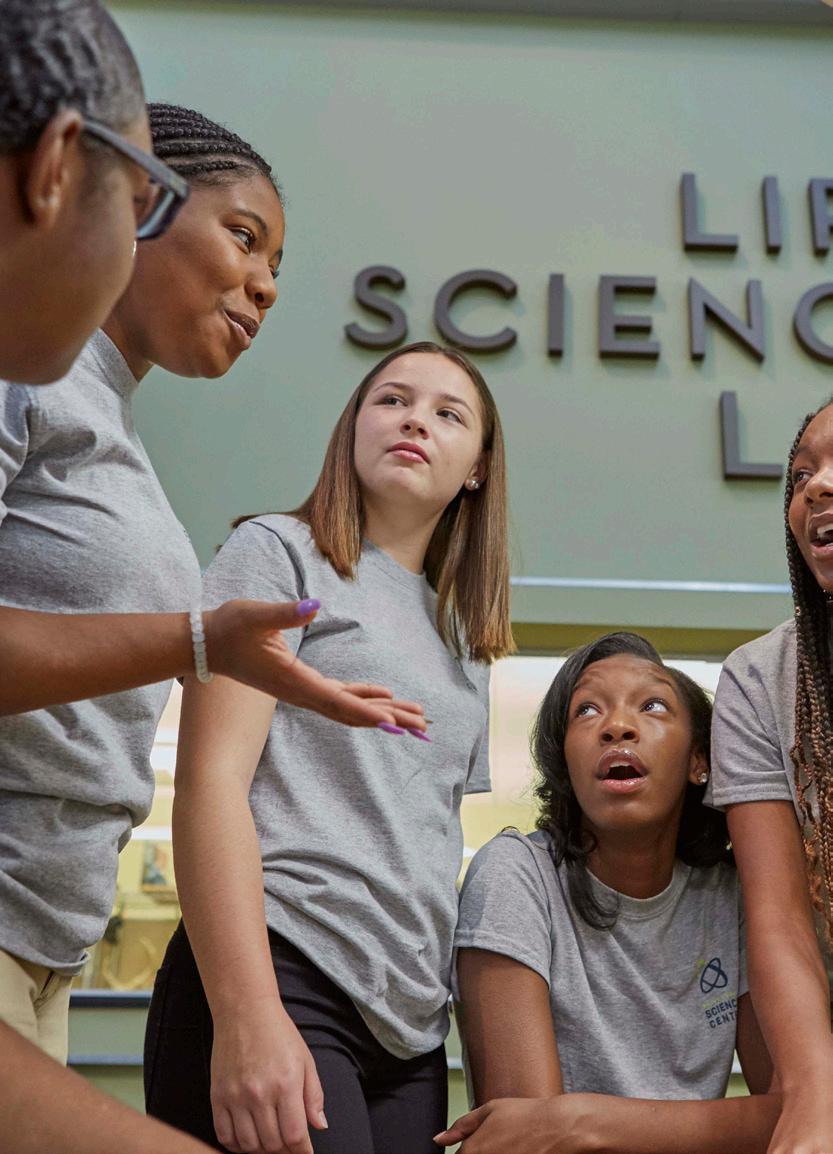
Thank you to our generous philanthropic partners at the Crawford Taylor Foundation for their support of our mission to inspire everyone to be curious and engaged in science and helping inspire the St. Louis community to build a brighter future for St. Louis by championing science education.
16 SUMMER 2024



And thanks to a generous matching gift from the Crawford Taylor Foundation, your gift to the Science Center will be matched dollar-for-dollar making your gift today twice as impactful.
At the Crawford Taylor Foundation, we are passionate about programs that enhance St. Louis’s reputation and make our city and region a richer place to live.
Since its earliest days, the Saint Louis Science Center’s YES Program has inspired us by empowering young people throughout our community to be curious about science, technology, engineering, and math; pursue their potential in the STEM careers of tomorrow; and help forge a bright future for our city.
We hope that this matching gift opportunity inspires others here in St. Louis and beyond to join us in celebrating the YES Program’s legacy of success and investing in the St. Louis of tomorrow by empowering our community through science education.
– JOANN KINDLE, Chairperson, Crawford Taylor Foundation
Join the Crawford Taylor Foundation in sparking our community’s passion for STEM and opening doors to the careers of tomorrow by supporting the Science Center and the YES Program’s continuing legacy of success.

Scan here to support the Science Center’s Curiosity Fund and STEM education programs like YES! Double Your Impact with 3 Easy Ways to Support 1 Mail Use the reply envelope and please make checks payable to St. Louis Science Center Foundation. 2 Phone Call us at 314.289.4414. 3 Online Visit sIsc.org/donate or simply scan the QR code.
Jack Taylor and JoAnn Kindle with earlyparticipants in the YES Program.
TOTALITY OR BUST!

April 8, 2024–The Great North American…Traffic Jam!
On Monday, April 8, 2024, a total solar eclipse swept across the United States, and southern Missouri had a front-row seat for this awe-inspiring natural event.
“A partial eclipse–especially 99% like we had in St. Louis–is a really cool thing, but it doesn’t come close to experiencing totality in a total solar eclipse,” said Will Snyder, manager of the Saint Louis Science Center’s James S. McDonnell Planetarium.
“Only one in 10,000 people can say they’ve seen a total solar eclipse, and we wanted to make sure as many people as possible could get to the path.”
The McDonnell Planetarium team facilitated a bus trip to the path of totality where the moon would completely cover the sun called Trek to Totality. That Monday morning, two busloads of nearly 100 eclipse hunters departed from the Planetarium to view totality in Perryville, MO, but numerous accidents on highways created delays and gridlocks across the state.
“We anticipated very heavy traffic, but fender benders brought the roads to a complete stop,” said Snyder. “It was nervewracking to see our arrival time continue to grow later and later.”
What was planned to be one viewing event in Perryville ended up becoming three separate viewing events as the team scrambled to ensure everyone would make it to totality.
According to Snyder, “As the time of the eclipse grew closer, we had to make the decision to shift destinations just to get anywhere in the path that we could.”


In what became a mad dash against the clock, both buses made it to totality. “We had no time to be picky. One bus viewed totality from a Walmart parking lot in Desloge, MO, while the other viewed the event from a Baptist church in Bonne Terre, Missouri,” Snyder said.
Even under demanding conditions, totality was a beautiful and surreal experience. “When totality began, everyone started cheering. The corona was absolutely breathtaking, and the planets Venus and Jupiter were amazingly bright,” Snyder added. The journey was longer than anticipated, but the end result was worth it.
The next total solar eclipse visible over any part of Missouri will not be until August 12, 2045.
18 SUMMER 2024
JOIN US
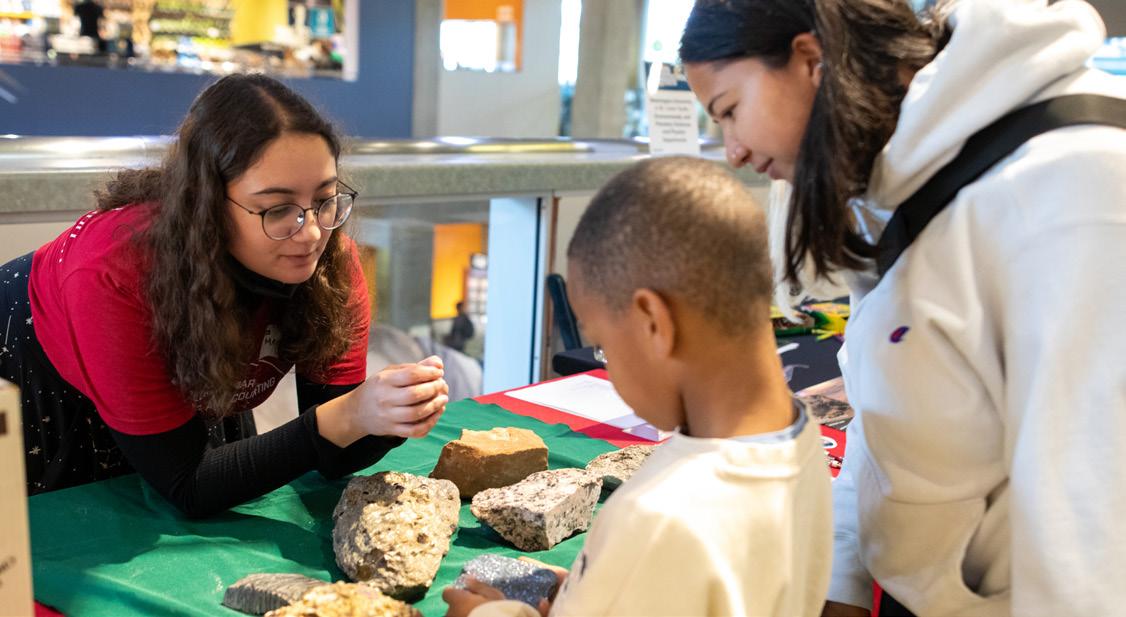
SciFest: Engineering and Great Outdoors Expos Put the Fun in STEM Fundamentals
In February, SciFest: Engineering Expo brought together more than 340 exhibitors and over 4,000 guests in public attendance to immerse themselves in the creative, problem-solving world of engineering. With numerous STEM activities to explore, guests also got to meet and hear from representatives from a wide range of engineering areas—civil, electrical, process, biomedical, aerospace and chemical, just to name a few! Attendees shared on social media that it was “the most engaging event we’ve ever been to” and noted their amazing day.
Then in early April, SciFest: The Great Outdoors Expo asked the question, “What do a solar eclipse, goats, rabbits, fossils and weather balloons have in common?” With over 150 exhibitors and a variety of animals gathered on the Science Center campus, more than 2,200 guests had the chance to find out. Guests also enjoyed STEM activities highlighting nature, agriculture, weather, aeronautics, paleontology, sports, outdoor safety and more. First-time SciFest participants included members of the University of Missouri’s Meteorology and Atmospheric Sciences Department, who made the Science Center a weather balloon release site, as well as Benson Hill and Laumeier Sculpture Park. Of all the participants, NASA/JPL flight engineer Jenna Cadwallader, featured in the Winter 2023 issue of NewScience, came the longest distance; she visited the Science Center for the first time, rather than present remotely from California.
DON'T MISS OUT ON OUR NEXT SCIFEST!
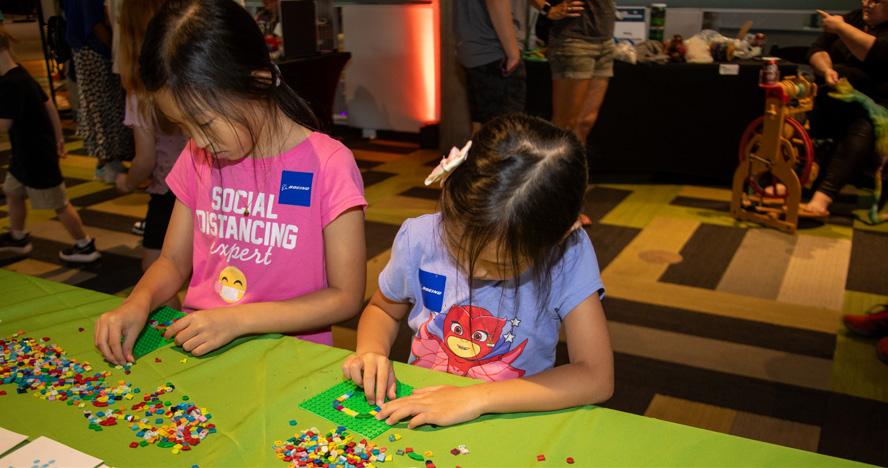

Cities of the Future | NOW SHOWING
Discover the innovations transforming our world. Imagine stepping 50 years into the future and finding smart cities designed to be totally sustainable. This isn’t science fiction. Engineers are making plans for a sustainable world right now, and it’s coming to the giant screen!
Cities of the Future is produced in association with the American Society of Civil Engineers.
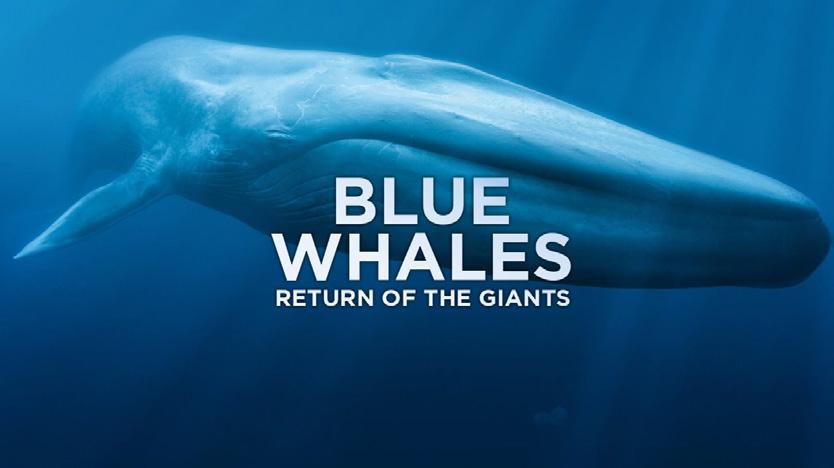
Blue Whales | OPENS JUNE 21
Blue Whales: Return of the Giants takes viewers on the journey of a lifetime to explore the world of the magnificent blue whale, a species rebounding from the brink of extinction.
SATURDAY, JULY 13 | 9:30AM-5:30PM
For our full OMNIMAX® Theater schedule visit slsc.org/calendar
SciFest: Play & Creativity Expo
Enjoy our free, all-day event showcasing how STEM concepts, innovation, play and creativity all go together! Meet, work and play alongside artists, authors, innovators, STEM experts, creatives and entrepreneurs. Get involved and engage your own creativity and bright ideas.
See the latest news about SciFest at slsc.org/scifest
19
SAVE THE DATE
THIS SUMMER AT THE OMNIMAX® Theater



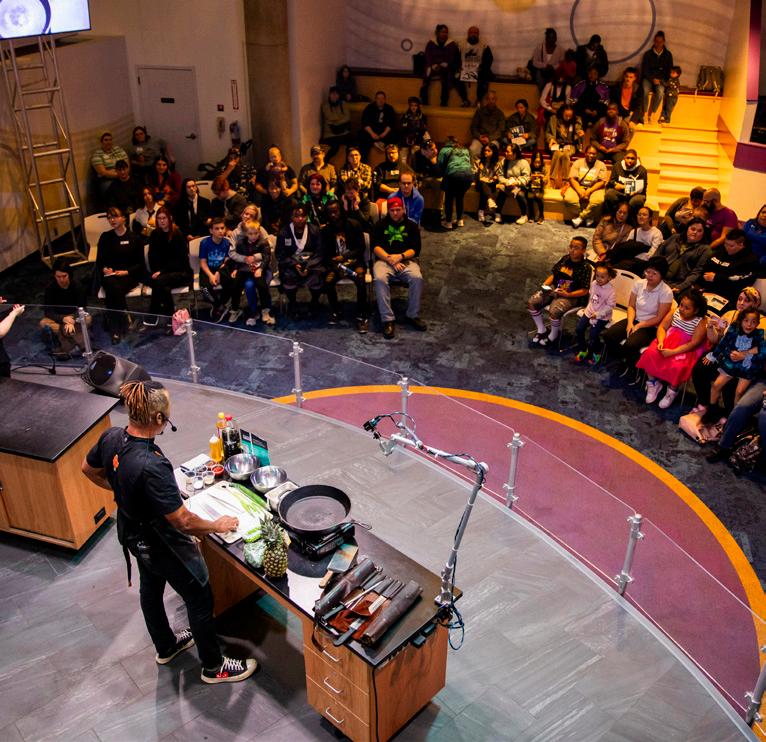
FIRST FRIDAY RECAP
One First Friday in Spring…
JULY | NO FIRST FRIDAY

AUGUST 2
Jim Henson ’ s Muppets, Dinosaurs and More!
On the evening of March 1, over 1,700 guests, partners and vendors gathered to participate in our huge First Friday: Anime Appreciation! Featuring incredible presenters like St. Louis-based designer and illustrator Natashna Anderson and our very own team members Chef Kore Wilbert and Educator Matt Gandolfo, we focused on the many ways anime has inspired members of our community. Guests were also treated to trivia under the stars, cosplay contests and our very first Maid Cafe in partnership with Anime St. Louis!
Not to worry if you weren’t able to make it; there’ s plenty more First Friday to come in 2024! Check out our upcoming programming where we’ll feature our wonderful partners and vendors, not to mention the hidden STEM behind our favorite franchises!
All First Friday events will take place from 5:00pm–9:00pm. Visit slsc.org/first-fridays for updates and schedules.
20 SUMMER 2024 JUNE
X-Men
7
SUMMER
UPCOMING
FIRST FRIDAYS
JOIN US
SPECIAL EXHIBITION
LIMITED TIME | Opens June 8, 2024
Tickets: $6 for members ($12 for nonmembers)
Let’s go back–67 million years back–to the home of the massive and fearsome T. rex we now know as SUE. Coming in at over 40 feet in length and 13 feet in height, SUE dominated the land for an astonishing 28 years, making SUE one of the longest living T. rex specimens found to this day.
Fast forward to today: SUE has become the Rosetta stone for dinosaur biology. Discovered in the 1990s in the Hell Creek Formation in South Dakota, SUE shows us how the most complete T. rex specimen ever discovered was unearthed and how we are still learning from the bones. SUE’s bones, on display at the Field Museum in Chicago, are so well preserved that even today we can see where muscles, tendons and ligaments were attached and where injuries healed and scarred.
Since the Saint Louis Science Center opened our doors, our own beloved T. rex has welcomed guests with his fearsome roar. Now, with SUE: The T. rex Experience, we get to encounter the dinosaur world in a new and exciting way. Many of our own fossils featured on the Lower Level come from Hell Creek, but the most famous and intriguing of all the fossils found in Hell Creek is SUE.
In SUE: The T. rex Experience, while trekking across the recreated Hell Creek excavation site, you will need to use all your senses to understand the world of SUE. Take some time to explore the texture of dinosaur skin, smell the foul breath of a carnivore, hear the mighty T. rex roar and see a full-size cast of the T. rex’s biggest enemy, the Triceratops!
At the heart of the special exhibition, you will find a fully articulated cast skeleton of SUE with added gastralia (belly ribs). Be sure to stick around for the narrated light show telling SUE’s story of survival despite all the odds. Don’t miss a chance to come face to face with one of the world’s most famous predators and experience the life of SUE the T. rex as never before.
Member tickets for the exhibition are available now, using your Single Member Login in our new ticketing and reservations system! We hope to see you at the SUE: The T. rex Experience member event on Sunday, June 16.

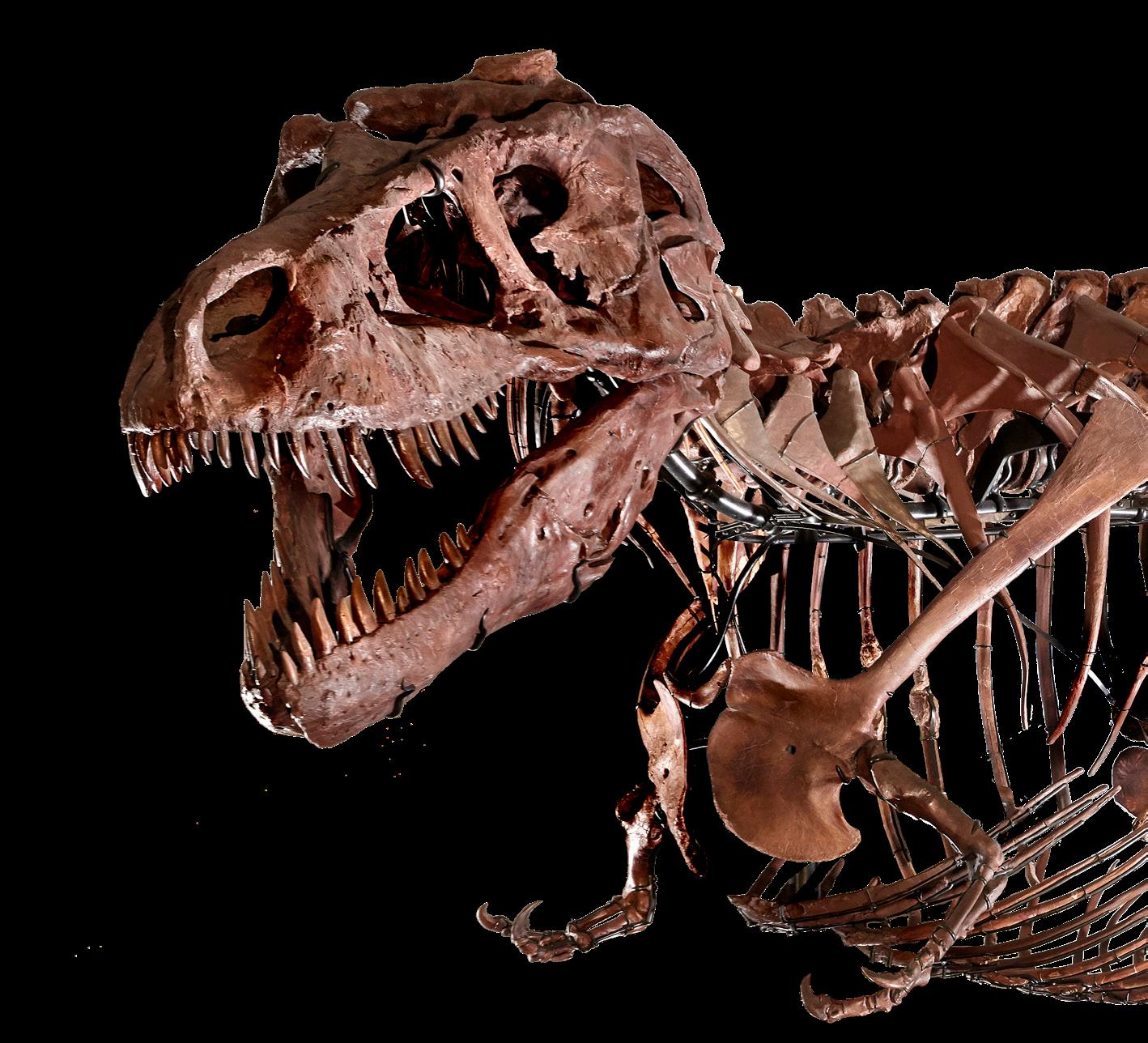
SUE: The T. rex Experience was organized by the Field Museum and is part of the Griffin Dinosaur Experience, made possible by the generous support of the Kenneth C. Griffin Charitable Fund.


GREAT
The story of how watching the sky changed the world
22 SUMMER 2024
TARIUM
TA
SH O W
P L A N E
S
R
JOIN US
Great Observations
Learn the story of how watching the sky changed the world in the McDonnell Planetarium’s live Star Show Great Observations
Stargazing may first seem like an amusing pastime, far disconnected from our day-to-day lives on Earth. However, the observations of the sky made by humans around the globe have a profound impact on the world in which we live. Our story starts with humble beginnings as humans first began to bring order to the seeming randomness of the cosmos through the creation of patterns in the stars. Using these patterns, we then learn the predictability of the sky and the motions of the heavenly bodies that provide the rhythm to our daily lives. Beyond what our human eyes can see, we next discover how telescopes have unlocked a new understanding of the universe and our place within it.
Great Observations reminds audiences that the study of the night sky is a journey with ancient origins that continues to shape the modern world. Join us to discover what your next great observation may be!
Stars Around the World
From the auroras of the Arctic North to the tropical constellations of the southern hemisphere, leave the familiar sights of St. Louis behind and experience the nighttime sky from changing locations on Earth.
The Sky Tonight
Relax under the clearest night sky in St. Louis as our skilled presenters lead you on a tour of the best the night has to offer.
The
Little Star
that Could
A tradition in St. Louis for over 30 years! Developed for our youngest stargazers, The Little Star that Could shares the timeless story of an “average” star in search of what makes him special.
SUMMER ASTRONOMY DATES
JUNE 20
Summer Solstice
Welcome back, summer! The Summer Solstice on June 20 marks the beginning of summer in the Northern Hemisphere and the sun’s highest position in the sky at local noon. After this date, the sun will get lower, and our days will grow shorter.
AUGUST 11–12
Perseid Meteor Shower Peak
The Perseid meteor shower is typically one of the year’s best opportunities to see shooting stars. Produced by debris left in space from comet Swift-Tuttle, upwards of 60 meteors per hour can be spotted from a dark location during the peak. In 2024, the moon will set by midnight, leaving darker skies for a possibly excellent early morning display.
AUGUST 19
Blue Moon
“Blue moon” is the nickname given to the second full moon in a calendar month, or the third of four full moons in a season. The time between full moons is 29.5 days, so most months will only have one full moon, and usually there are only three full moons per season. The full moon on August 19 is a seasonal blue moon because it is the third of four full moons this summer.

Laser Light Shows Returning Late Summer! Visit slsc.org for updates.
23

Piloting New STEM Programs for Fall 2024, the Science Center Explores Computer Science, Math, Art, and Language Arts Using Sphero BOLT™ Robots
This spring, the Saint Louis Science Center piloted new Sphero BOLT coding programs with area schools and libraries to add to our program offerings later this year. The Sphero BOLTs are educational robots that introduce kids of all ages to free driving, block coding and JavaScript—essential skills to jump into more advanced coding and robotics. Covering topics like computer science, math, art and language arts, these new Sphero BOLT programs integrate coding and computer science with other academic disciplines to show participants that computers and coding are connected to everything we do and will help participants gain confidence in their skills to pursue coding and robotics further.
At St. Louis Public Library Manachek Branch, the Community Science team had the chance to try out the brand new Sphero BOLT mazes—built by the Youth Exploring Science (YES) Teens—in the Can You Get Out of the Maze? program. In this program, participants learn how to use block-based coding (where users program by dragging and dropping “blocks” representing different instructions) to send the Sphero BOLT through the maze. Participants also practiced measuring angles and sounds to make the path through the maze smoother.
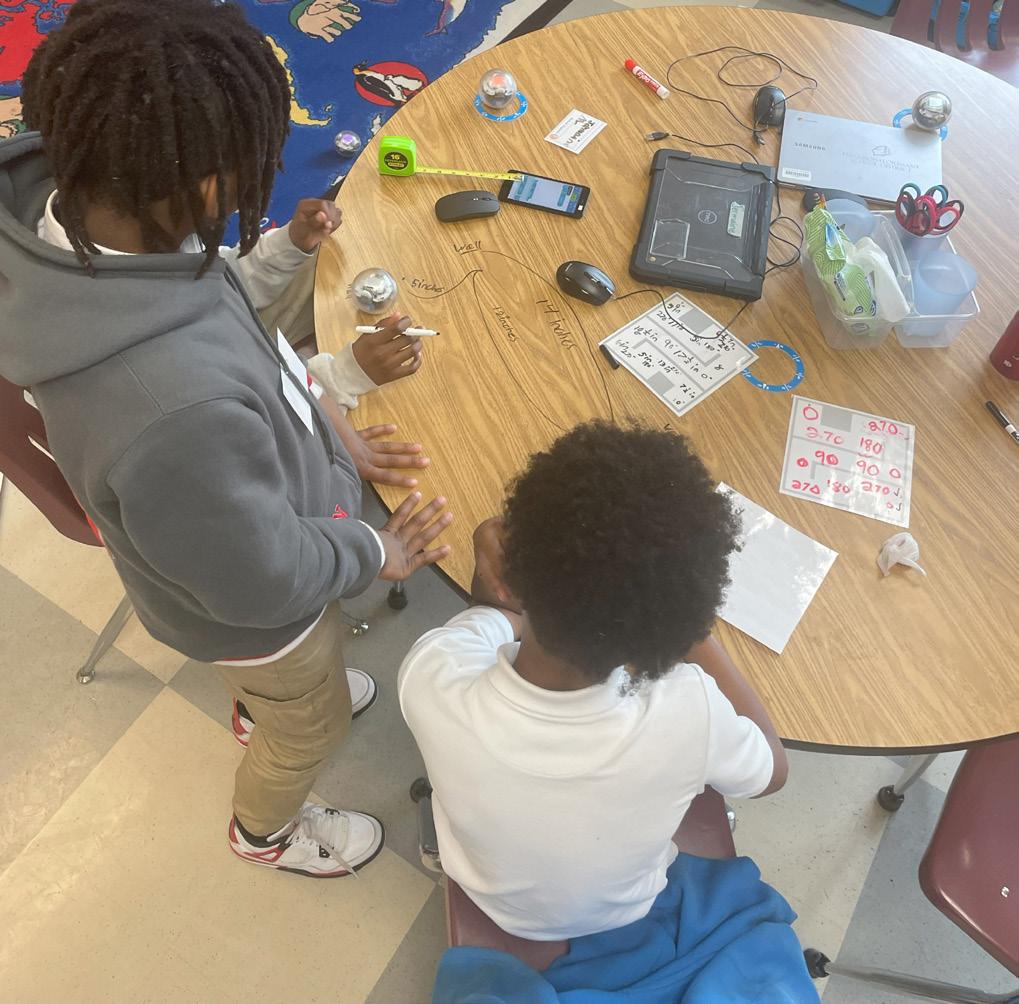

At Ferguson-Florissant PROBE, a gifted program at the Ferguson-Florissant School District, the Community Science team worked with students to practice their math skills using the Sphero BOLTs in the Target Math program. After reviewing how to complete order of operations problems, students wrote their own equations and coded the robots using the block programming language to show the equation on a game board.
At the Saint Louis Art Museum in the summer, the Artistic Creations program launched. In this program, participants learned how to drive the Sphero BOLT using the “draw” setting. This program also uses principles of color theory to teach participants about mixing colors. In the culminating project, participants used what they had learned to design and paint a collective work of art using the Sphero BOLTs.
At University City Public Library, participants found a new way to do book reports in the Be the Author of Your Own Story Sphero BOLT program. Here, participants illustrated a picture book of their choosing using the block coding programming blocks. They made the Sphero BOLTs talk, spin, change colors and move around the room to tell the story. The Community Science team also had the opportunity to take some of these coded stories by Ferguson-Florissant PROBE students to the African American Read-In at Compton Drew ILC Middle School, where students could see a robot telling the stories of Black STEM leaders as part of Black History Month in February.
24 SUMMER 2024 COMMUNITY
Our Newest YES Teens Learn to Teach
Every spring, the Science Center’s YES Program recruits new St. Louis teens for the four-year STEM program. And every year, those teens begin their time with the Science Center by learning STEM concepts and activities to teach younger children during Summertime Science, a summer camp held at the TaylorCommunity Science Resource Center for children from the St. Louis community.
The campers come from a network of community partners, including Girls Inc., the YMCA and a host of other educational and community-focused institutions. This year’s theme is aerospace, so the YES Teens will be facilitating activities such as showing the children how to launch stomp rockets and drive rover robots.

“Teaching younger children is extremely beneficial for the YES Teens,” says Lauren Patrick, YES Program manager. “The teens are more motivated to learn science content when they are responsible for teaching others, and that responsibility is very important for their socio-emotional growth.” In addition, Patrick explains, they learn soft skills such as teamwork, communication and leadership—vital 21st century skills—that allow them to inspire the St. Louis community’s curiosity for STEM during programs like Summertime Science and throughout their four years in YES.
To prepare for the summer, the new teens begin training in the spring, including spending eight Saturdays learning and developing their skills in presenting STEM content, teaching younger children and building the confidence to lead a classroom.
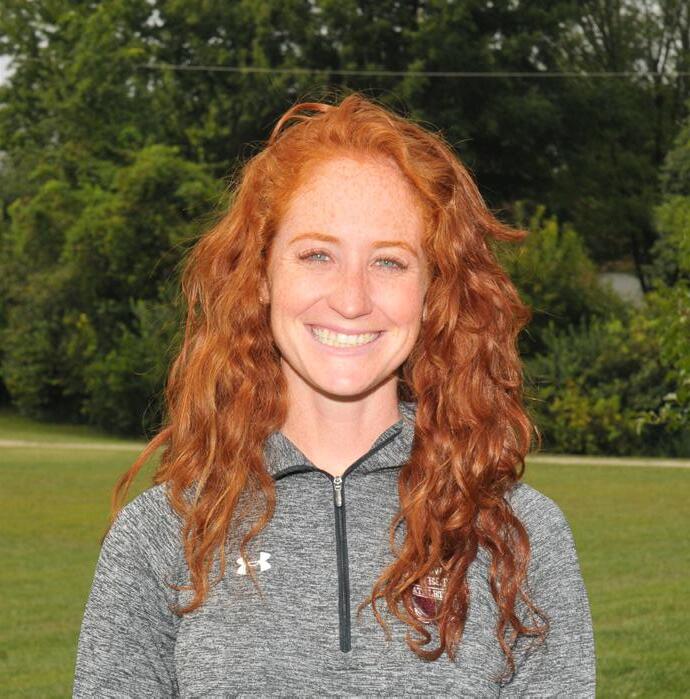
For 29 years, the Loeb Prize Has Honored Outstanding Science and Math Educators in the St. Louis Area Who Demonstrate a Passion to Inspire Learning.
On Thursday, May 16, Elisabeth Greenwood from Belleville West High School was awarded the Carol B. and Jerome T. Loeb Prize for Excellence in Teaching Science and Mathematics at a celebration at the Saint Louis Science Center’s McDonnell Planetarium.
This year’s event also honored Tim Mulhall, who teaches at Grand Center Arts Academy, as the second-place honoree. Other finalists included Jason McClelland from Central VPA High School, Marguerite Rousseau from Edward A. Fulton Junior High School and Sarah Winstead from STEAM Academy at McCluer SouthBerkeley High School. All finalists received cash awards.
“This year’s nominated teachers are an extraordinary group of highly qualified and dedicated educators. They are masters of their subjects, technologically savvy, innovative in their classrooms and consummate professionals. It is most rewarding to be able to recognize these outstanding teachers of tomorrow’s STEM leaders,” said Carol Loeb, a math teacher for more than 60 years, who along with her husband, the late Jerome T. Loeb, established an endowment for the Loeb Prize in 1995 in partnership with the Science Center. Carol Loeb also serves on the Science Center’s Board of Trustees.
“We are proud to be longstanding partners with the Loeb family to recognize and reward outstanding teachers dedicated to STEM education,” said Todd Bastean, president and CEO of the Science Center. “The Loeb Prize is one of the many ways we honor educators who make an impact on the lives of their students and share in our mission to inspire everyone to be curious and engaged in science.”
The challenge of teaching is never completely conquered, but that is one of the reasons I love it. Every year, with a new batch of students, I try to build new relationships, change the way students interact with the material, and cohesively present the material, so they will not only have a high chance of success learning chemistry but also skills to be independent learners.
ELISABETH GREENWOOD
2024 Loeb Prize winner
25
2024 Loeb Prize winner
Elisabeth Greenwood, Belleville West High School
more on page 30!
Summertime
Science is supported in part by a generous grant from Boeing. Learn
Esports

High Schools Compete in Esports to Benefit Extra Life
Local students who are part of The Missouri Esports Federation (MOSEF) united at the Saint Louis Science Center this spring for a noble cause: to save and improve the lives of sick and injured kids treated at St. Louis Children’s Hospital and SSM Health Cardinal Glennon Children’s Hospital. Extra Life, a Children’s Miracle Network Hospitals fundraising program, provides game-loving locals a fun way to support the youngest patients in our community.
Teams from Bishop Dubourg, Christian Brothers College High School, Francis Howell Central, Fox Senior High, Gateway Science Academy, Saint Louis University High, St. Dominic High School and Webster Groves High School competed on Saturday, April 20 in Super Smash Bros.™ and Valorant™ tournaments. The winners of the Smash competition were Webster Groves High School, and SLUH took home the trophy in Valorant.
Congratulations to the winners, and we’re grateful to the teens who donated their time and gaming skills to raise over $4,500 for this important cause.
Learn more about Extra Life at extra-life.org, or find out about upcoming esports competitions at slsc.org/esports


Summer Esports Camps at UHSP
SCHEDULED DATES:
JUNE 10–14 | JULY 15–19
The Saint Louis Science Center is excited to partner with the University of Health Sciences and Pharmacy (UHSP) in St. Louis on a summer esports camp series! These week-long experiences will bring 11- to 18-yearold gamers in the St. Louis region together with STEM professionals in the esports, medical and technology industries from around the country.
Monday through Thursday, campers will learn about various careers, ask questions and try new games in the UHSP Esports Arena. The week will culminate with a special opportunity for campers to experience an OMNIMAX® Theater film and a McDonnell Planetarium Star Show. Campers will experience various game titles all week, then finish the final day with a competition or free play in the Science Center’s innovative gaming arena, the Dino Den, featuring one of our popular games.
JUNE 10–14: Focusing on Esports and Gaming Careers
JULY 15-19: Focusing on Media Broadcast & Content Creation
To learn more or register, visit slsc.org/programs/esports-enrichment-program
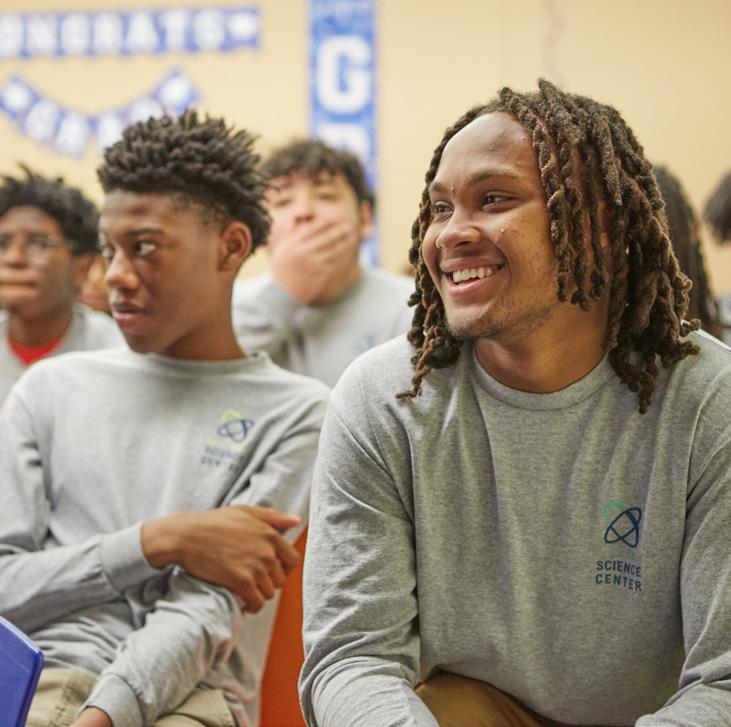

Congratulations to the 2024 Graduating Class of the YES Program!
The Saint Louis Science Center’s Youth Exploring Science (YES) Program Celebrates a 25-Year Legacy of Success with its Latest STEM-Skilled Graduating Class.
Congratulations to the YES Program’s graduating class of 2024! At a special ceremony on April 27 at the Taylor Community Science Resource Center, 18 graduating YES Teens were recognized for completing the Science Center’s YES Program, the only four-year informal STEM learning program in St. Louis that delivers opportunities in a work-study framework and prepares participants for in-demand 21st century careers.
Starting in the spring of their freshman year and continuing through their four years of high school, the YES Teens meet regularly at the Taylor Community Science Resource Center. During the school year, the teens explore STEM content through hands-on projects in focus areas like aerospace, agriscience, engineering, entrepreneurship, integrated medicine and well-being, computer science and more.
Over the summer, the YES Teens help spark the St. Louis community’s curiosity for STEM with community outreach programs at the Science Center, as well as throughout the St. Louis area, through collaborations with the Science Center’s network of community partner organizations.
In the YES Program, the teens also develop workplace skills and the tools for a successful transition into post-secondary education or the STEM-skilled workforce while also getting the opportunity to make friendships with other teens throughout the St. Louis area and impactful connections with STEM professionals.
Meet this year’s graduating YES Teens and hear some of their favorite memories from their time in YES!

Continues on Page 28
27

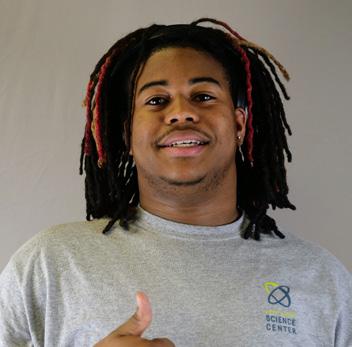


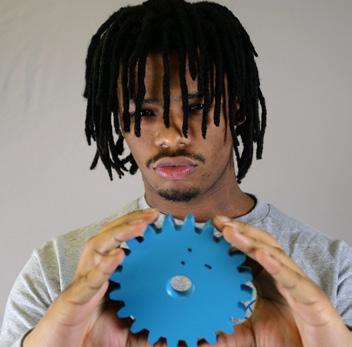

Zionna Anderson
YES STEM Focuses: Media Arts and Computer Science
Zionna is a graduate of Incarnate Word Academy and plans to attend college and major in computer science, focusing on game and app development. Additionally, Zionna was recognized by the Saint Louis Art Museum and had her photography on display through the end of 2023.
Deandre Baylark
YES STEM Focuses: Computer Science and Engineering
Deandre is a graduate of DeSmet Jesuit High School and plans to attend college and major in computer science. Deandre’s favorite memory from the program is working with the YES Program’s supervisors.
Cameron Clayborn
YES STEM Focuses: Computer Science, Engineering, Aerospace and Agriscience
Cameron is a graduate of Cardinal Ritter College Prep High School. Cameron plans to pursue a biology degree and a career as a maxillofacial surgeon. Cameron’s favorite thing from the YES Program has been “learning how to help kids in the community become closer to science.”
Daveion Devreas
YES STEM Focus: Computer Science
Daveion is a graduate of DeSmet Jesuit High School and plans to attend college to study computer engineering. Daveion’s favorite memory from the YES Program has been learning how to build a PC and learning to stream live events like the YES Program’s annual YES Networking Extravaganza and graduation ceremony.
Zaevon Dickerson
YES STEM Focuses: Computer Science, Aerospace and Agriscience
Zaevon is a graduate of University City High School and plans to attend college after graduation. Zaevon’s favorite memory has been everything in the Aerospace focus area!
Josh Gollapudi
YES STEM Focuses: Computer Science and Engineering
Josh is a graduate of Parkway North High School and plans to major in cybersecurity at college on his way to becoming a cybersecurity analyst. Josh’s favorite memory from the YES Program has been learning how to assemble a computer.



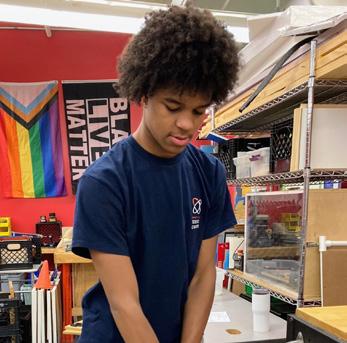


Caden Gulley
YES STEM Focuses: Computer Science, Aerospace,and Agriscience
Caden is a graduate of DeSmet Jesuit High School and plans to attend college and pursue a career in politics. Caden’s favorite memory from the YES Program has been the camaraderie built with all the YES Teens.
Nehtia Hazelwood
YES STEM Focuses: Computer Science and Agriscience
Nehtia is a graduate of Rosati-Kain Academy. Nehtia plans to study criminal justice or criminology in pursuit of a career as a forensic pathologist. Her favorite memory of the YES Program was learning to build a PC.
Hannah Perjack
YES STEM Focuses: Cybersecurity, Integrated Medicine and Well-Being and Aerospace
Hannah is a graduate of Gibault Catholic High School and plans to pursue a degree in nursing to become a nurse practitioner in pediatric oncology. Hannah’s favorite memory in the YES Program has been “learning about all the careers I can learn more about and how to apply that knowledge practically to deciding my future career.”
Kayden Ramsay-Alexander
YES STEM Focuses: Computer Science, Media Arts, Engineering and Agriscience
Kayden is a graduate of Hazelwood West High School and plans to major in biomedical engineering with a minor in neuroscience. Kaden’s favorite memories from the YES Program have been “flying a flight simulator, gaining confidence and becoming more outspoken.”
Isabella Rayford
YES STEM Focuses: Computer Science and Cybersecurity
Isabella is graduate of Incarnate Word Academy and plans to attend college and major in computer science. Isabella’s favorite memory in the YES Program has been learning how to build a PC.
Armon Reed-Wynne, Jr.
YES STEM Focuses: Cybersecurity and Computer Science
Armon is a graduate of Hazelwood East High School and plans to go to college in pursuit of a career as a computer engineer. Armon’s favorite memory of the YES Program has been learning about all the different parts of a PC.

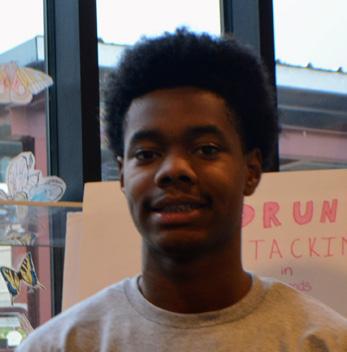

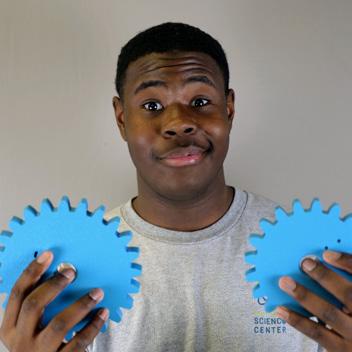

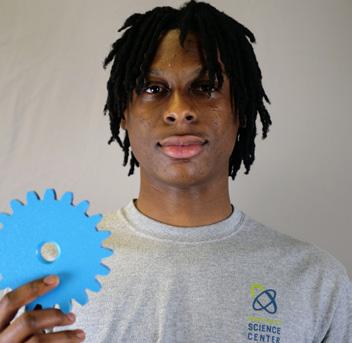
Salena Reeves
YES STEM Focuses: Cybersecurity and Computer Science
Salena is a graduate of Collegiate School of Medicine and Bioscience. Salena plans to major in pre-med biology in pursuit of a career as an internal medicine physician. Her favorite memory in the YES Program has been “learning how to build my own computer for both work and gaming purposes. Also, how to fix and maintain most of my technology.”
Elias Scott
YES STEM Focuses: YES Entrepreneurship Club (YEC) and Integrated Medicine and Well-Being
Elias is a graduate of Saint Louis University High School and plans to study civil engineering in college. Elias’s favorite memory of the YES Program was exploring entrepreneurship: “I’ve learned the different aspects of business and how to present my ideas and plans in front of an audience with confidence.”
Caleb Tills
YES STEM Focuses: Media Arts, Engineering and Agriscience
Caleb is a graduate of Pattonville High School and plans to attend trade school after graduation in pursuit of a career as an electrician. Caleb’s favorite part of the YES Program has been building a remote-controlled go-kart.
Donovan Scott
YES STEM Focus: YES Entrepreneurship Club (YEC)
Donovan is a graduate of DeSmet Jesuit High School. Donovan plans to attend college after graduation, and his favorite memory in the YES Program has been learning more about recycling.
Abby Torres
YES STEM Focuses: YES Entrepreneurship Club (YEC), Engineering, Agriscience and Integrated Medicine and Well-Being
Abby is a graduate of Grand Center Arts Academy. She plans to complete a summer physical therapy training program before attending college in pursuit of a career as a physical therapist. Abby has enjoyed learning how to properly take care of plants in the YES Program.
Shakaid Zevulun
YES STEM Focuses: YES Entrepreneurship Club (YEC), Engineering, Agriscience and Computer Science
Shakaid is a graduate of Gateway STEM High School and plans to study cybersecurity in college. Shakaid’s favorite memory from the YES Program has been learning how to cook different healthy food options.
Saint Louis Science Center Receives Grant from The Boeing Company to Enhance STEM Learning
Boeing’s generous support will advance the Science Center’s efforts to provide educational outreach to underserved, underrepresented communities.
Earlier this year, the Saint Louis Science Center was proud to continue our longstanding relationship with Boeing with the receipt of a generous $80,000 grant to support the Science Center’s Community Science programming, which enhances vital skills and brings fun, hands-on learning to St. Louis area youths from communities who have limited access to STEM (science, technology, engineering and math) curricula.
“A STEM-based education prepares individuals for more than simply careers in science; it develops their personal leadership and problem-solving skills for the near- and long-term horizon,” noted Bobby Sanderson, chief institutional advancement officer for the Saint Louis Science Center. “By supporting STEM learning, the Science Center and our community partners hope to spark students’ educational interests, expose them to potential career fields they may not readily consider on their own, and develop them into role models for our community. We’re honored to continue this relationship with Boeing and are grateful for their support in providing this much-needed programming for youth in the St. Louis area.”
“The Saint Louis Science Center is an important STEM organization in our community,” said Chris Bray, Boeing Global Engagement Central Region senior manager. “Our longstanding relationship has increased STEM educational opportunities for youth of all ages and backgrounds. Boeing is proud to support programs like Youth Exploring Science that support our local future innovators.”
“Students with limited access to high-quality, outside-of-school learning are disproportionately impacted in their developmental path,” the Science Center’s Senior Director of Community Science Siinya Williams said. “Our programming strives to promote self-confidence that leads to success in participants’ life-long journey. With this Boeing grant, we can expand our educational outreach to broaden our impact within our community.”
Thank you again to Boeing for their generous support for our mission to inspire everyone to be curious and engaged in science!


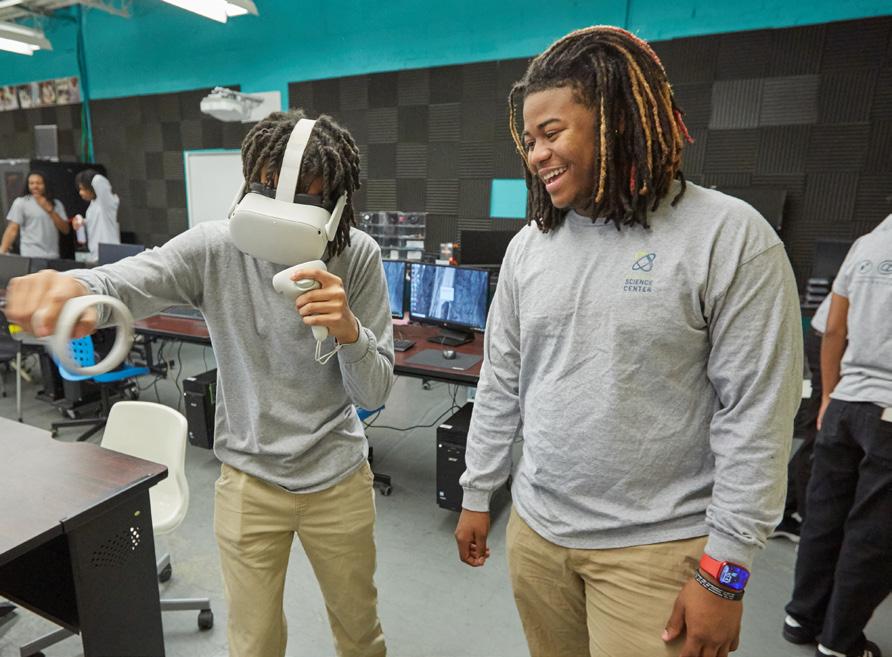
30 SUMMER 2024 PARTNERSHIP & SUPPORT
Boeing’s philanthropic support will directly benefit Science Center programs like those listed below, which operate at no cost to participants or the local community organizations they represent:
The Science Center’s Youth Exploring Science (YES) Program is the only four-year informal STEM learning program in St. Louis that delivers opportunities in a work-study framework and prepares participants for in-demand careers of the 21st century, including aerospace, agriscience, computer science, engineering, entrepreneurship and integrated medicine and well-being.
Celebrating its 25th anniversary last fall, the YES Program has seen more than 1,200 area teens empowered by participation in the program, and thousands of St. Louis Metropolitan Area residents have been exposed to STEMfocused programming through the YES Program’s outreach initiatives.
Offered Mondays through Thursdays from June through July at the Science Center’s Taylor Community Science Resource Center, the Summertime Science program introduces STEM concepts to thousands of students each year. During daily sessions, individuals can observe the operation of the facility’s flight simulator, design and fly paper airplanes, learn physics concepts and gain more insights into aerospace and aeronautics.
STEMtastic Camp delivers STEM experiences directly to students attending summer school in the FergusonFlorissant and Riverview Gardens school districts. Both districts are Title 1 schools that aim to improve academic achievement in their students. Through the program, flight, space and technology lessons will demonstrate how the students’ lives and their interests closely connect with everyday engineering, technology and aerospace concepts.

Support STEM Education and the Mission of the Saint Louis Science Center with our 11th Annual Golf Tournament.
Tuesday, October 1, 2024 | 8:30am–4:30pm
Norman K. Probstein Golf Course in Forest Park
Register today to participate in the Science Center’s 11th Annual Golf Tournament in support of our Curiosity Fund, one of the financial engines powering our impactful STEM programming at the Science Center and throughout the St. Louis community. Our annual golf tournament is a wonderful opportunity to partner with the Science Center to make an impact on open, accessible STEM learning by supporting our mission to inspire everyone to be curious and engaged in science
Help us continue inspiring people of all ages at the Science Center and throughout the St. Louis region by registering for a fun-filled day at our 11th Annual Golf Tournament.
Want to Play?
$175 per person | Entry fee includes:
18 holes of golf with cart, lunch and beverages Tournament t-shirt
Skills competitions
Raffle drawings
Outdoor awards reception & cocktail hour
Register to play at slsc.org/golf or contact Christine Cox, manager of sponsorship and promotions, at christine.cox@slsc.org or 314.289.4499
Don’t wait! Golfers’ names and t-shirt sizes due by Tuesday, September 24, 2024
Thank you to our returning sponsors!


31
Sponsor now at donations.slsc.org/sponsorship List current as of April 24, 2024.
+ + + + + • • •
5050 Oakland Ave. St. Louis, MO 63110
NewScience is always GREEN
The Saint Louis Science Center is a committed steward of the environment. We are proud to continue to offer the digital and interactive version of NewScience at slsc.org/newscience
If you would like to opt for a sustainable choice and only view NewScience digitally, please send an email to us at memberships@slsc.org to no longer receive a paper subscription.
You can also send us an email if:
• Your email address has changed
• Your name is misspelled
• Your address is incorrect


Host your next event at the Saint Louis Science Center
With six unique and flexible venues to choose from, the Science Center can accommodate anywhere from 10 to 2,000 guests. Our fresh, modern approach to cuisine, décor and entertainment will be sure to thrill everyone on your guest list.
Interested in booking?
See available event spaces at slsc.org/events
Email us at events@slsc.org or give us a call at 314.286.4654.
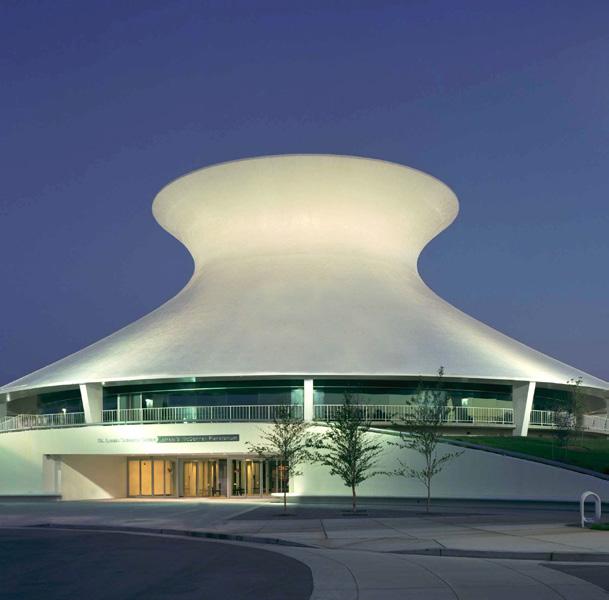


NONPROFIT ORG U.S. POSTAGE PAID ST. LOUIS, MO PERMIT NO. 1491
 SUMMER 2024
SUE: The T. rex Experience was organized by the Field Museum and is part of the Griffin Dinosaur Experience, made possible by the generous support of the Kenneth C. Griffin Charitable Fund.
SUMMER 2024
SUE: The T. rex Experience was organized by the Field Museum and is part of the Griffin Dinosaur Experience, made possible by the generous support of the Kenneth C. Griffin Charitable Fund.


 Todd Bastean President and CEO
Todd Bastean President and CEO












































































































